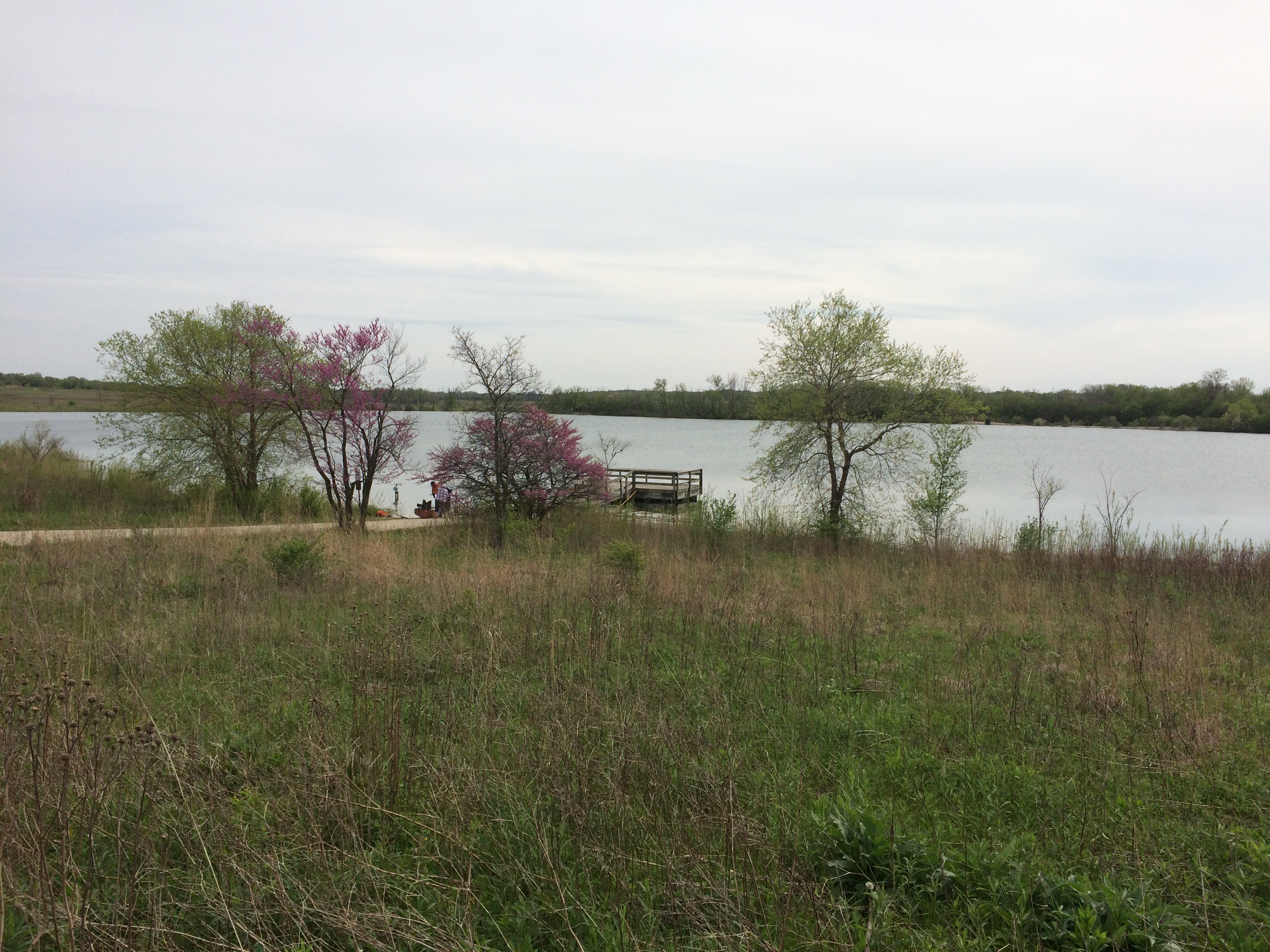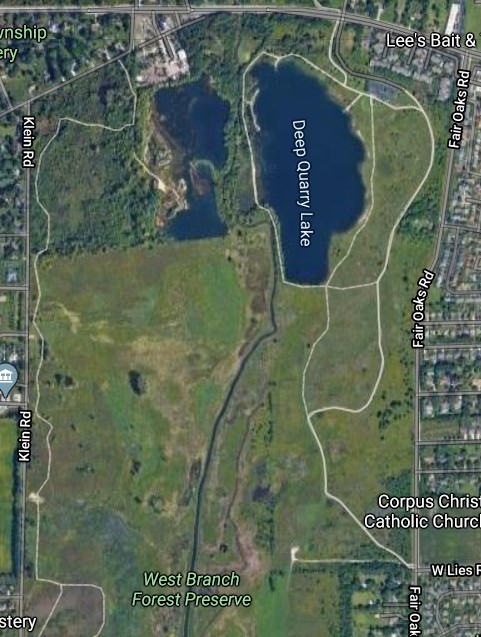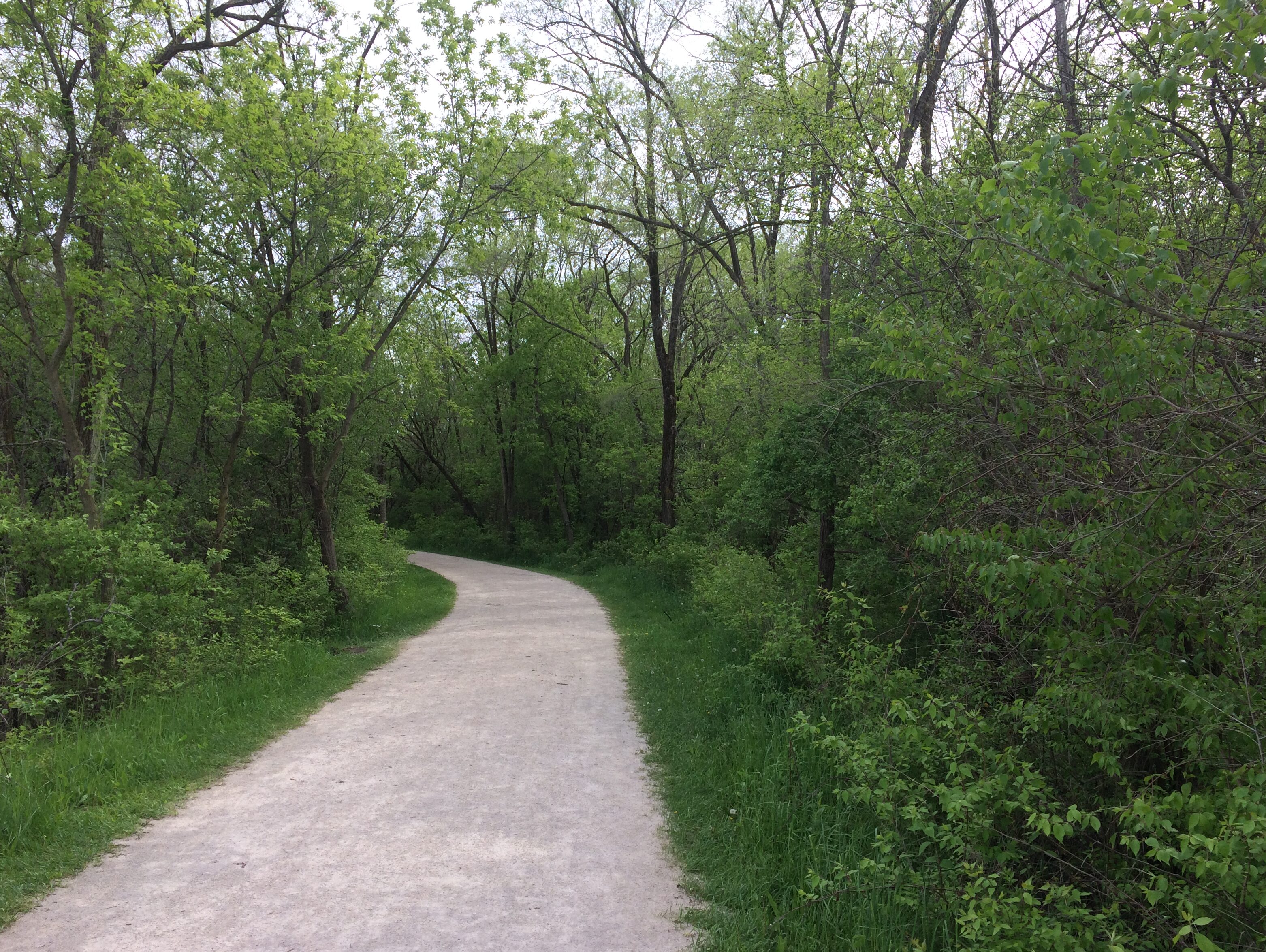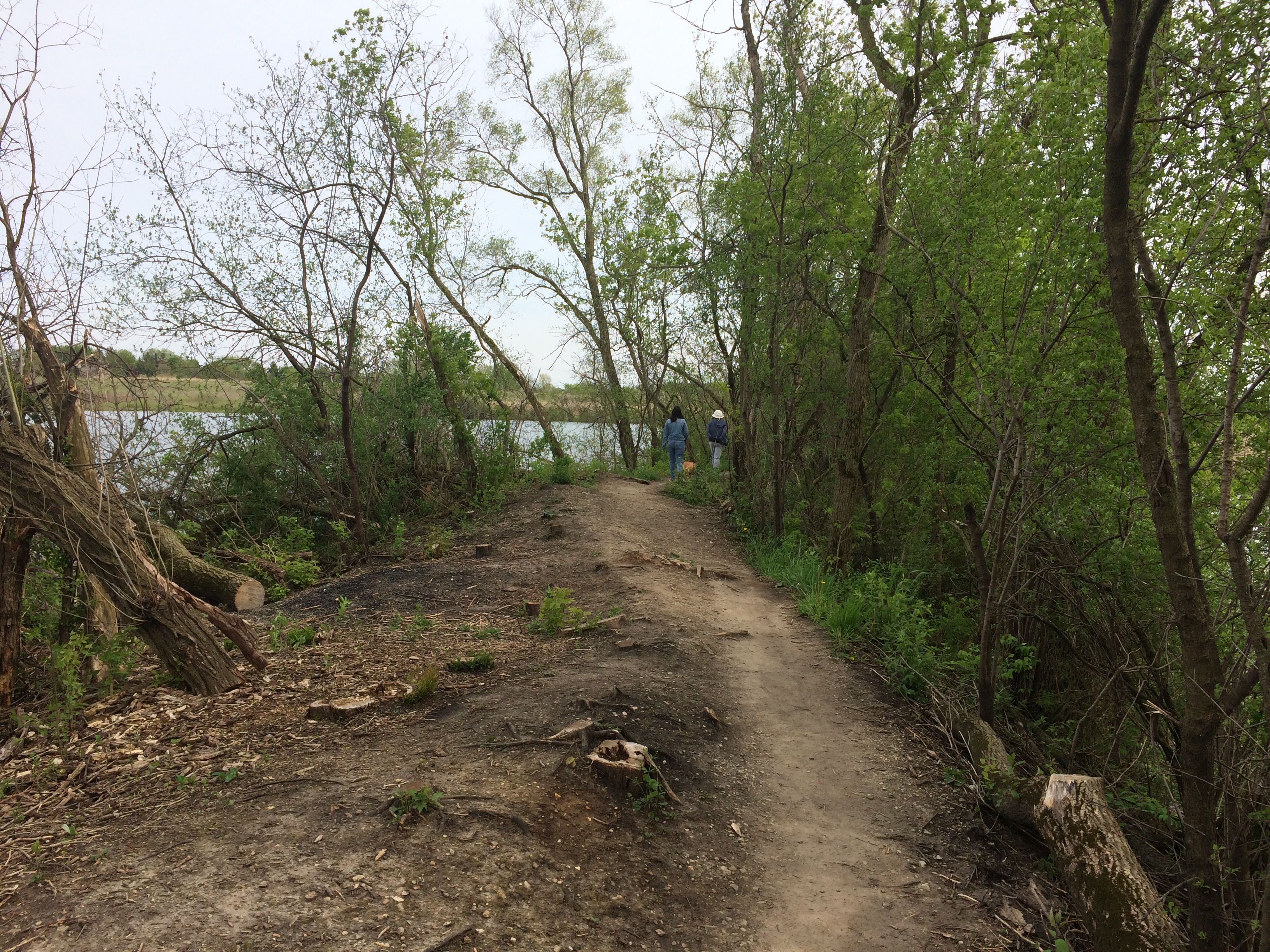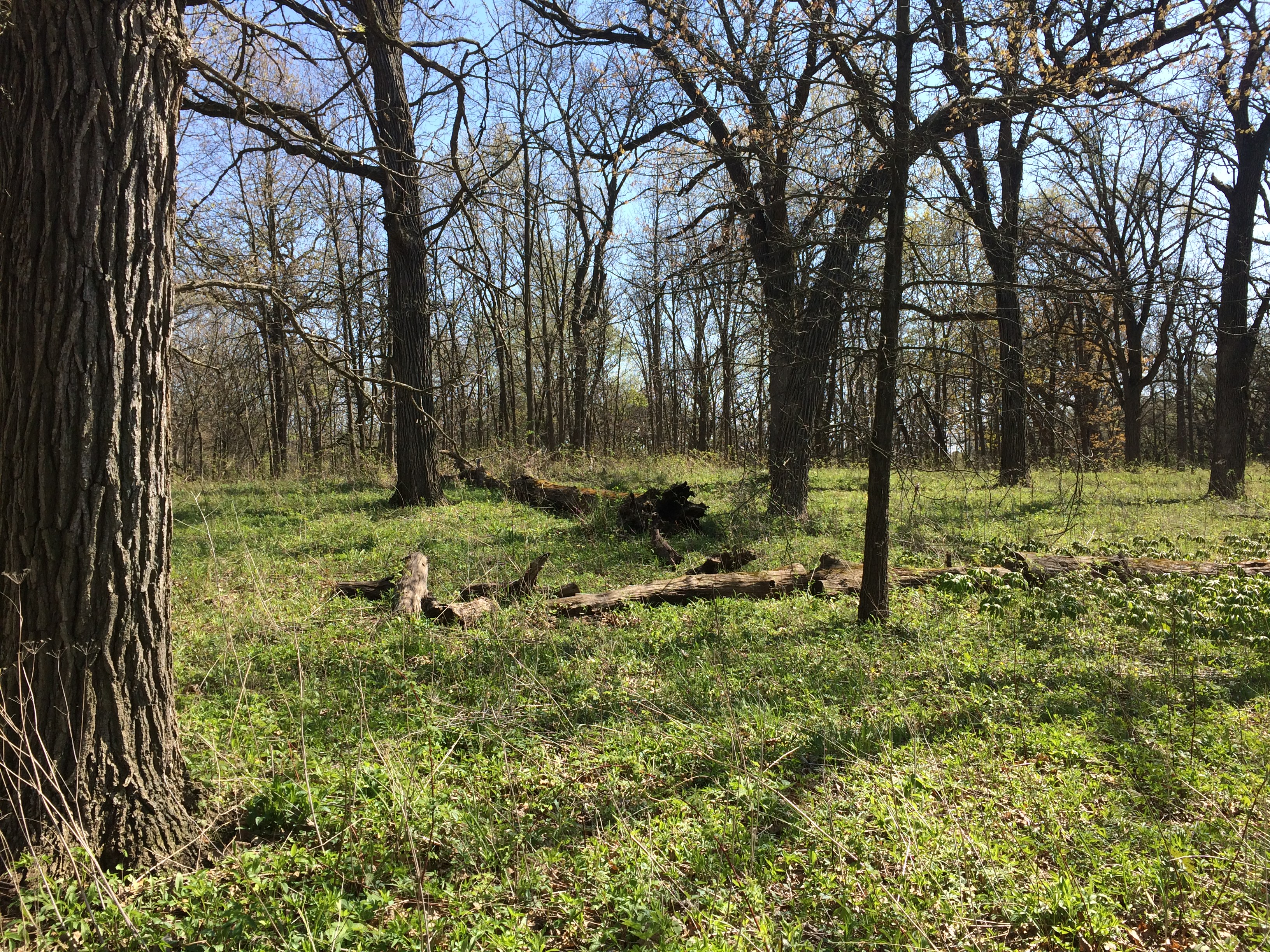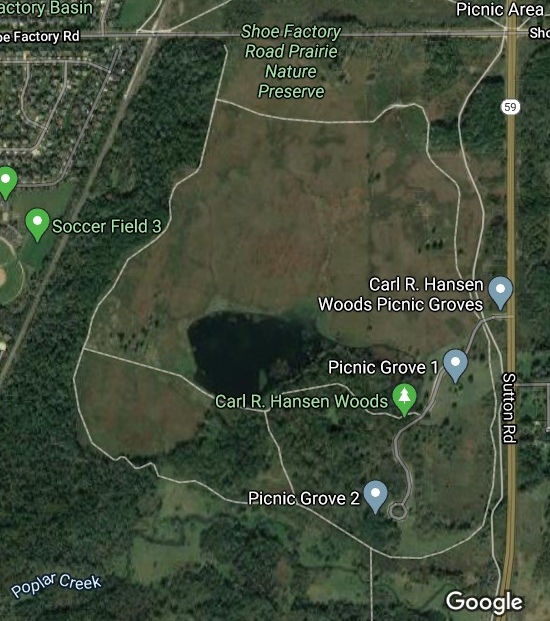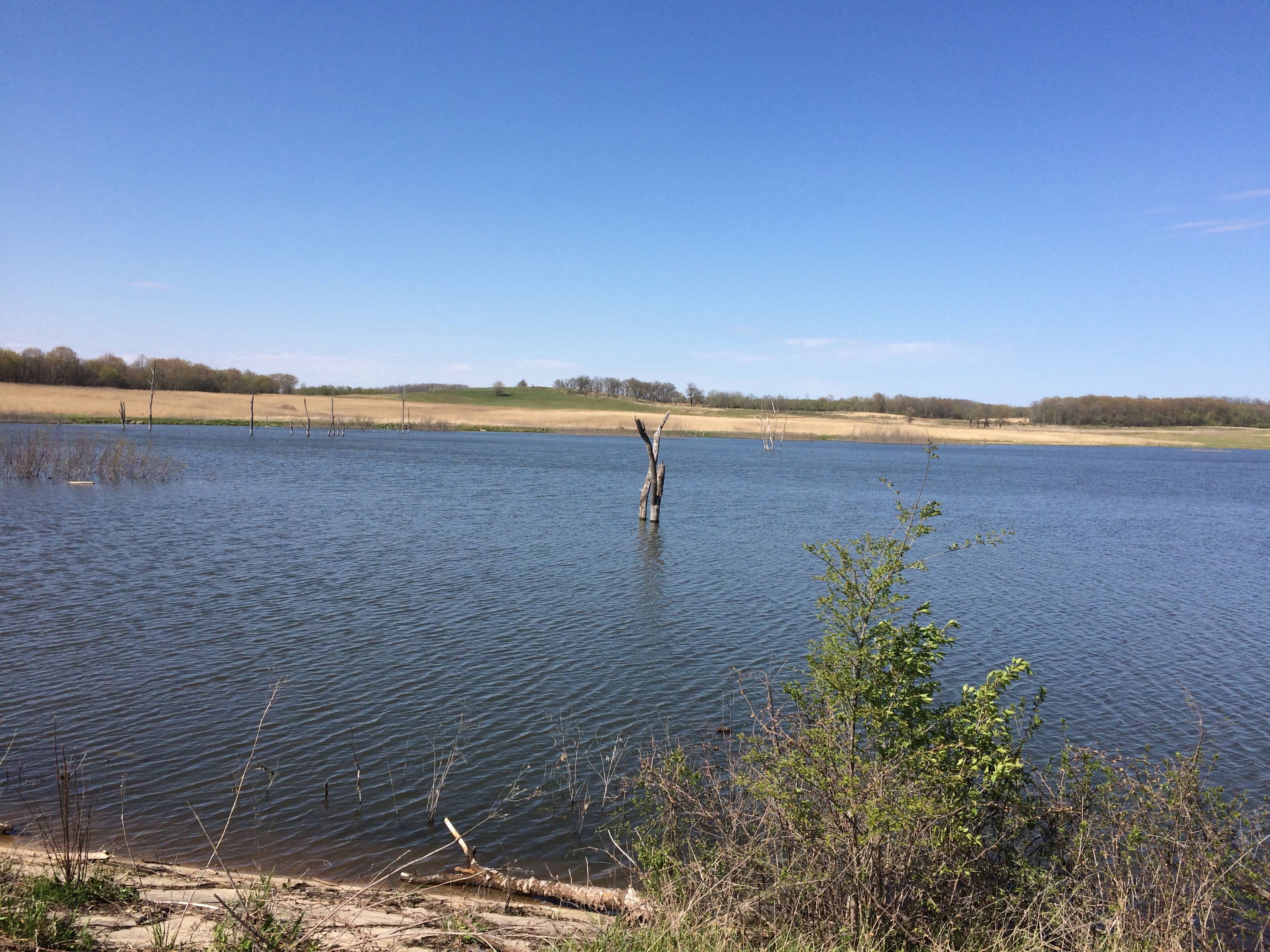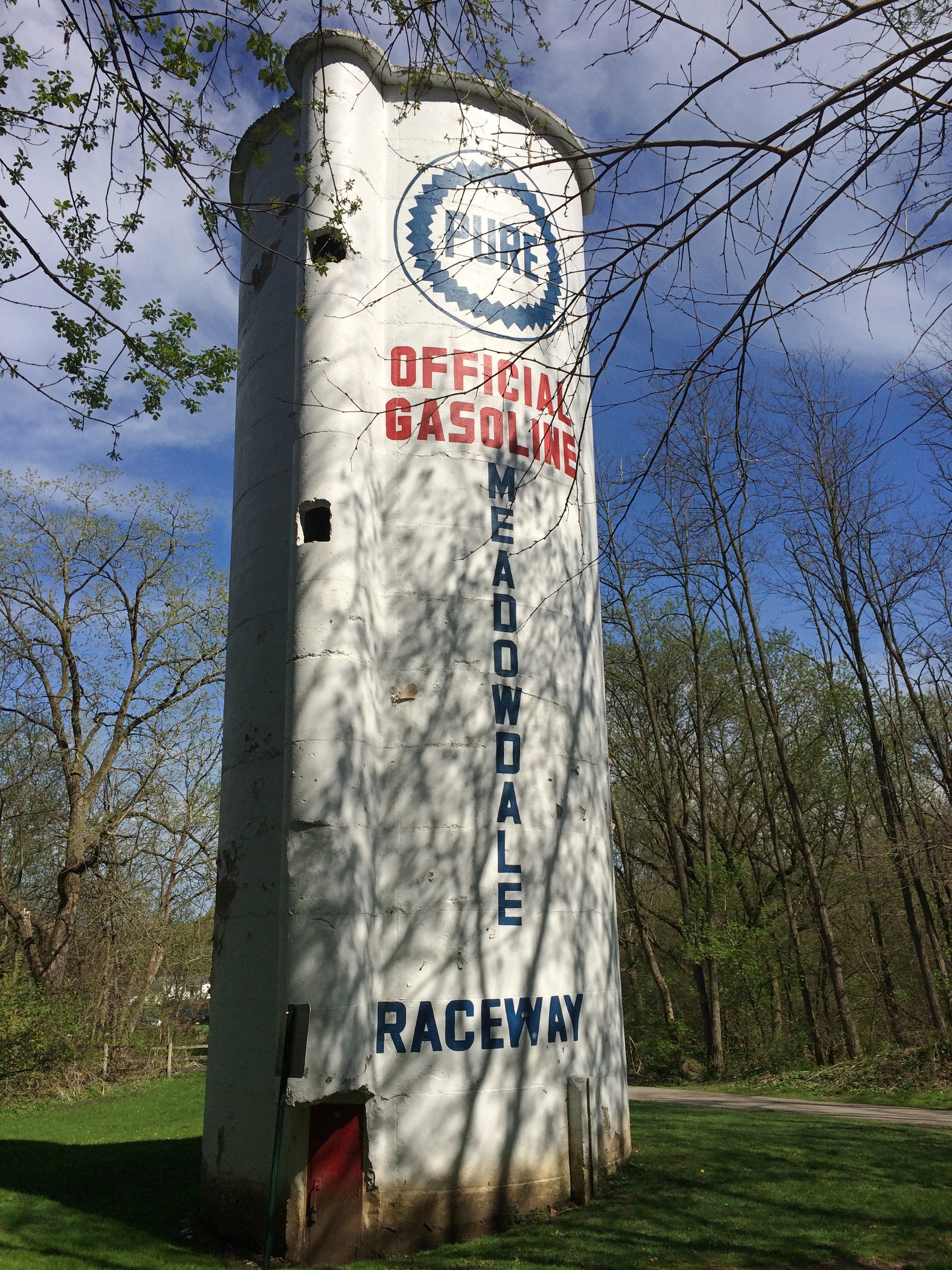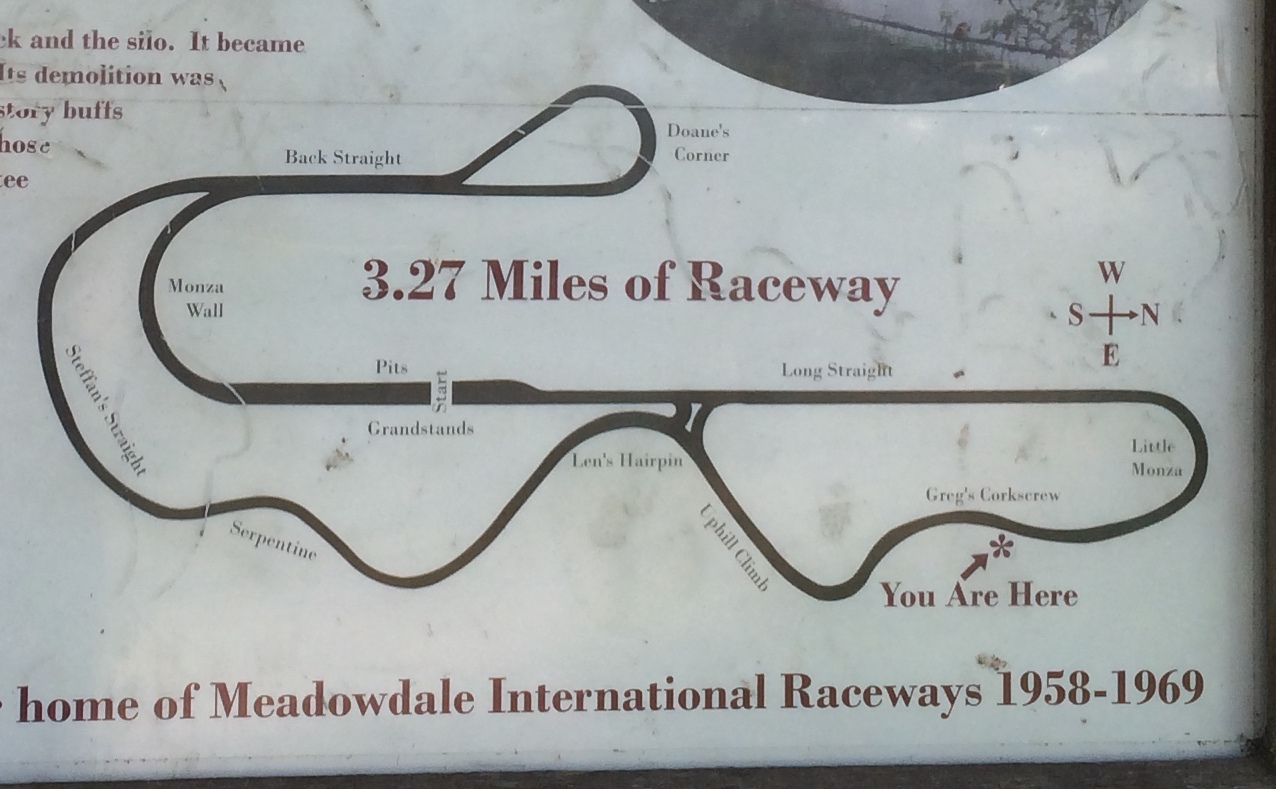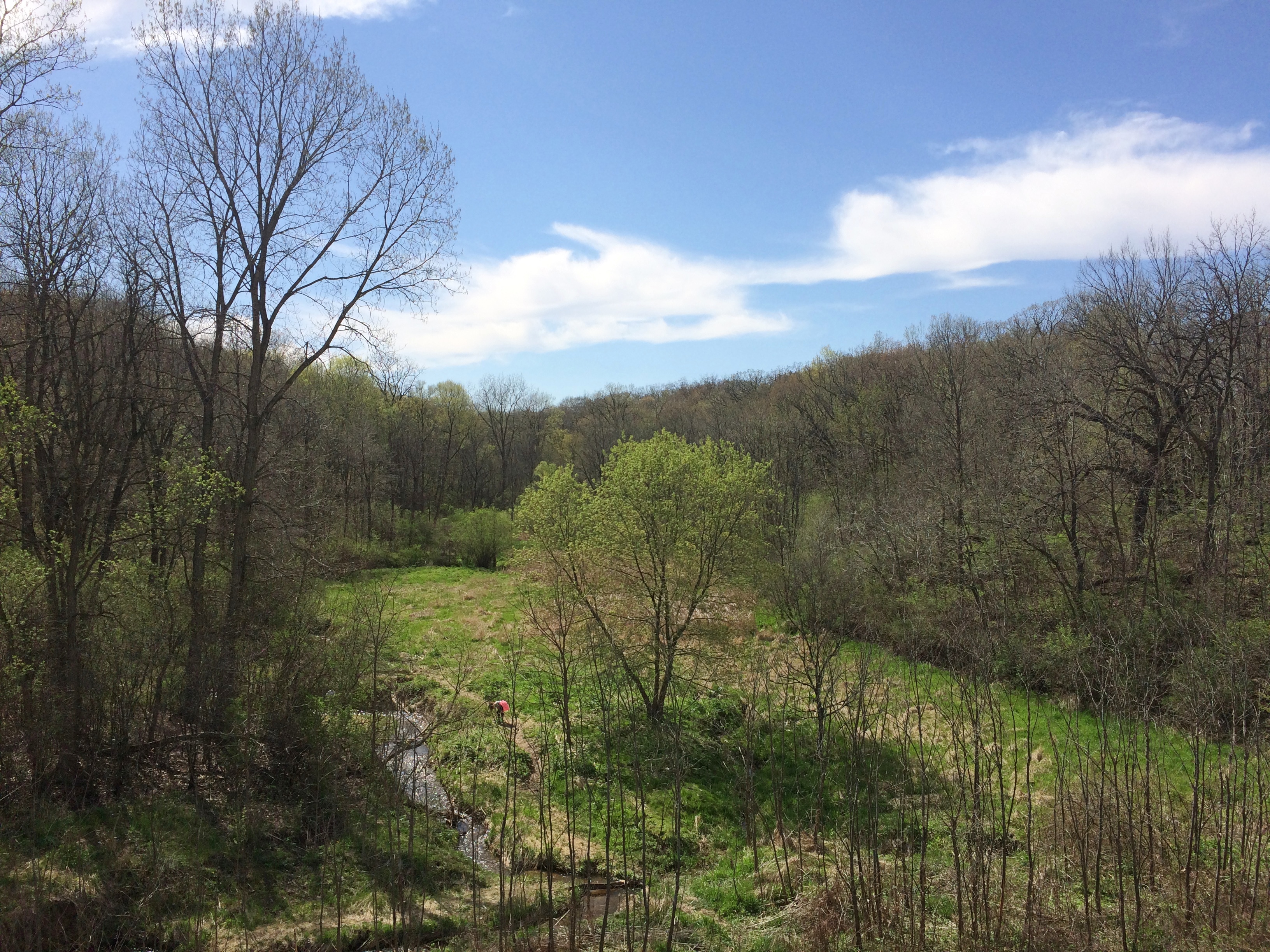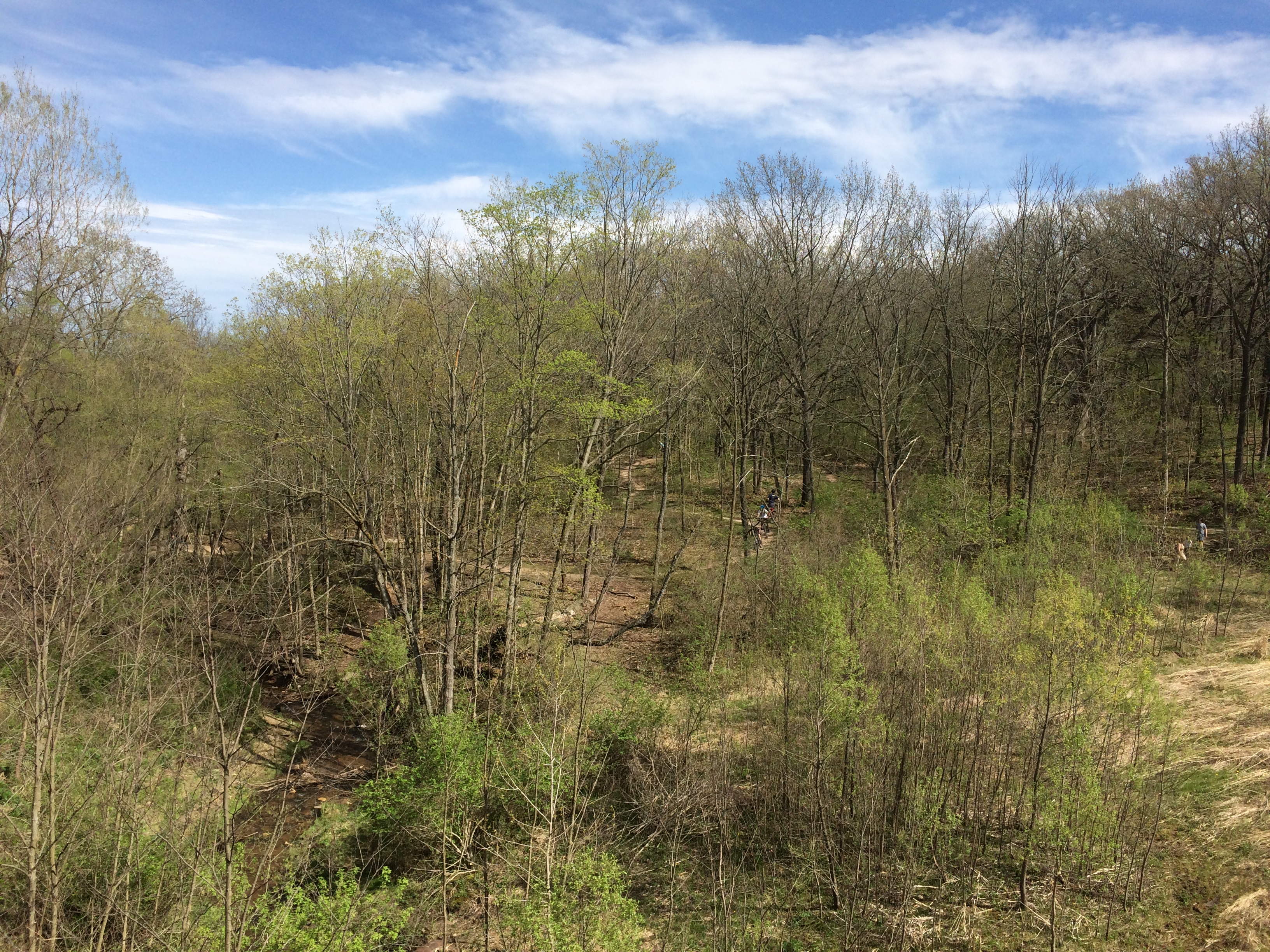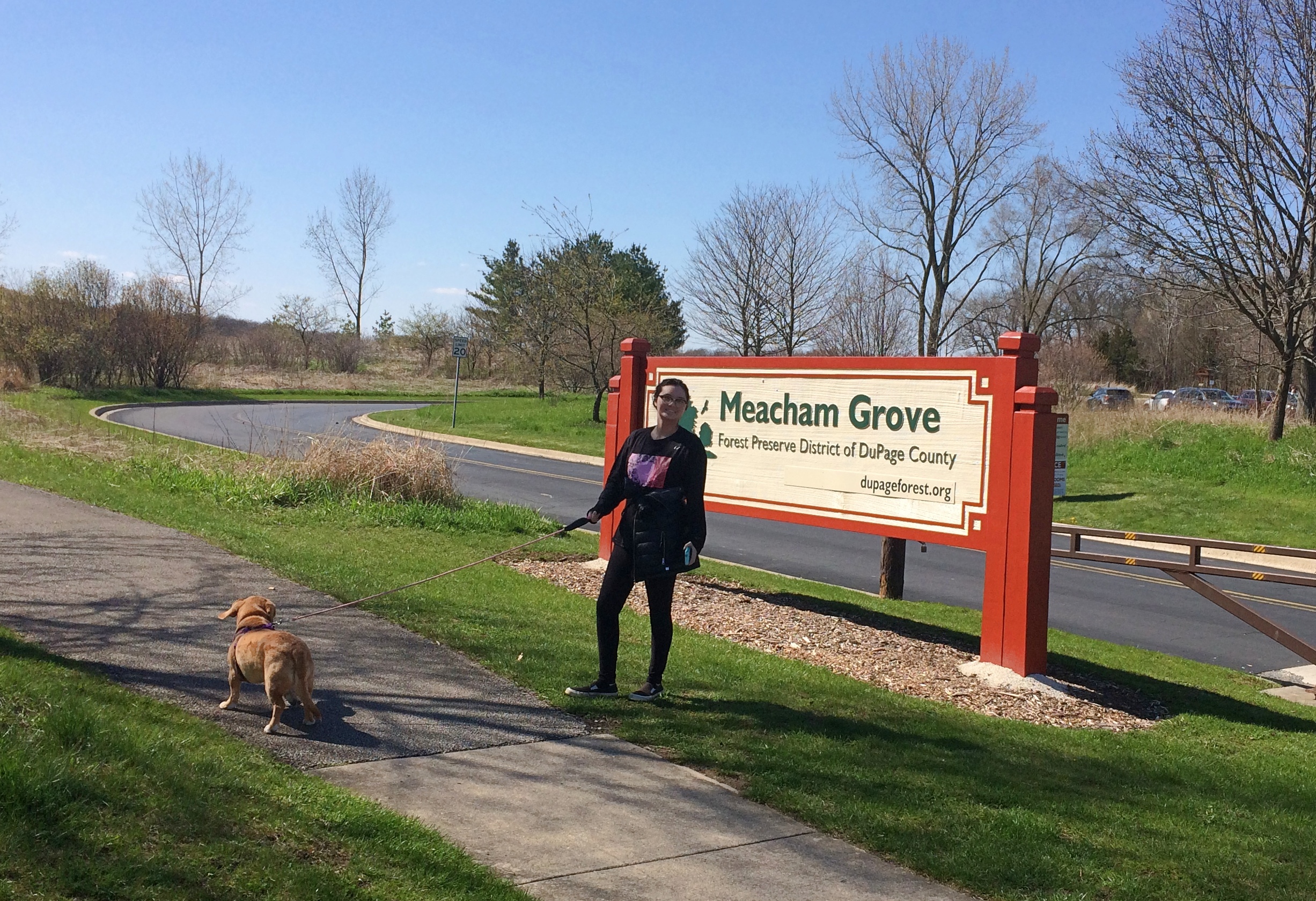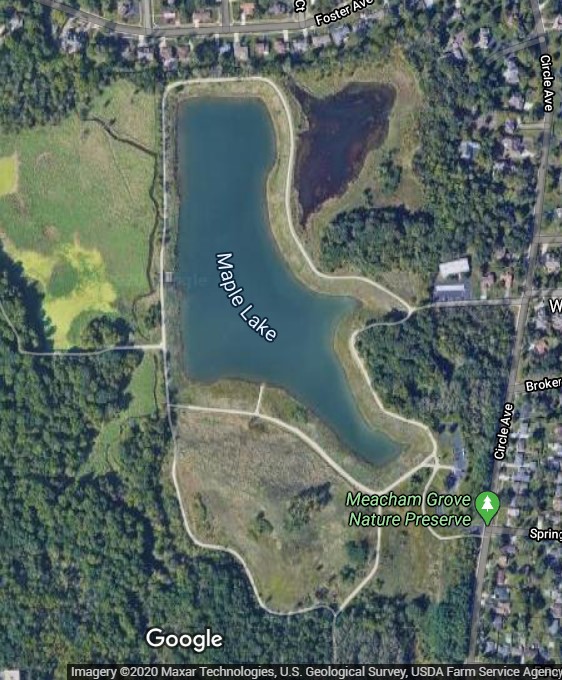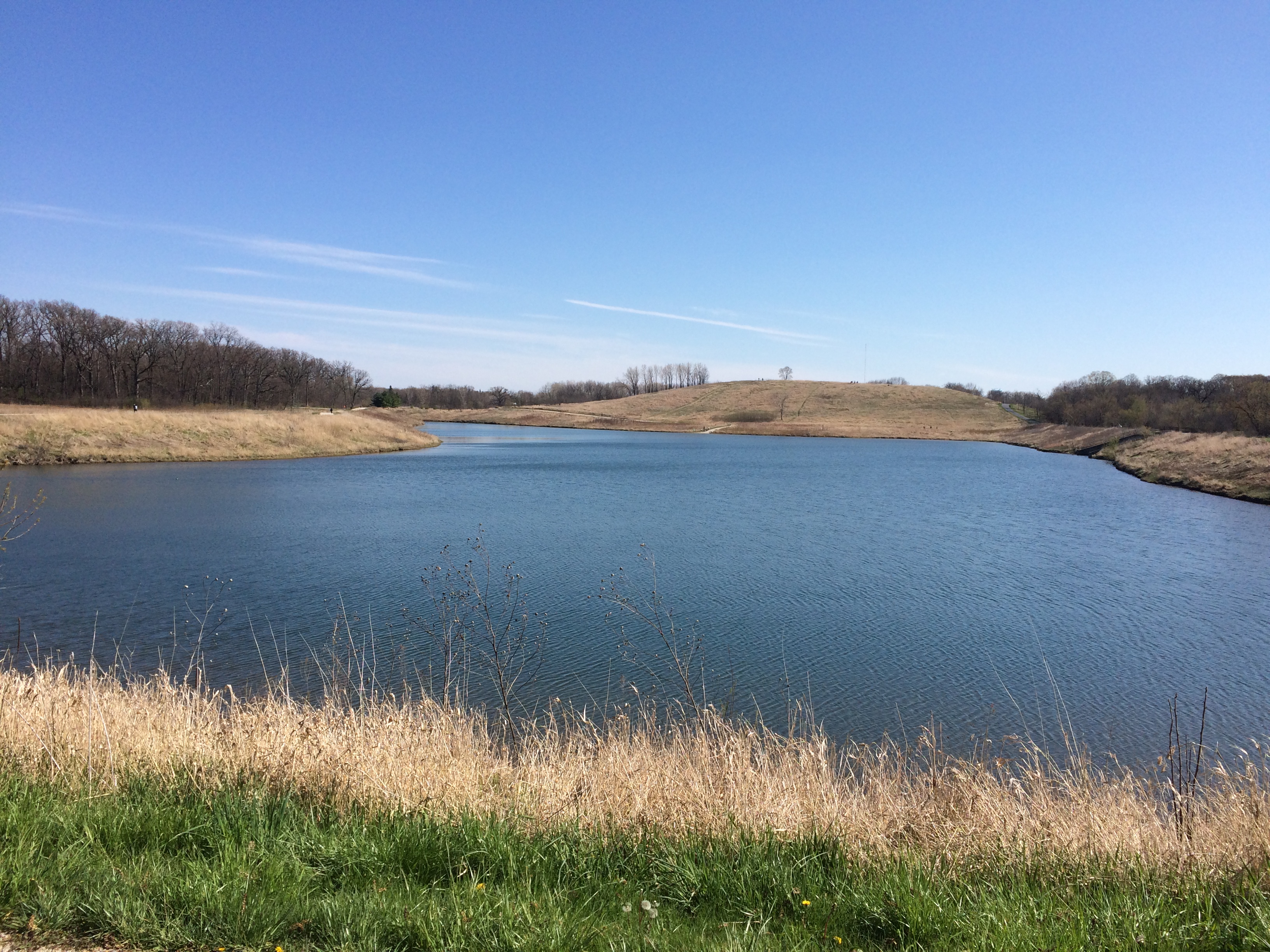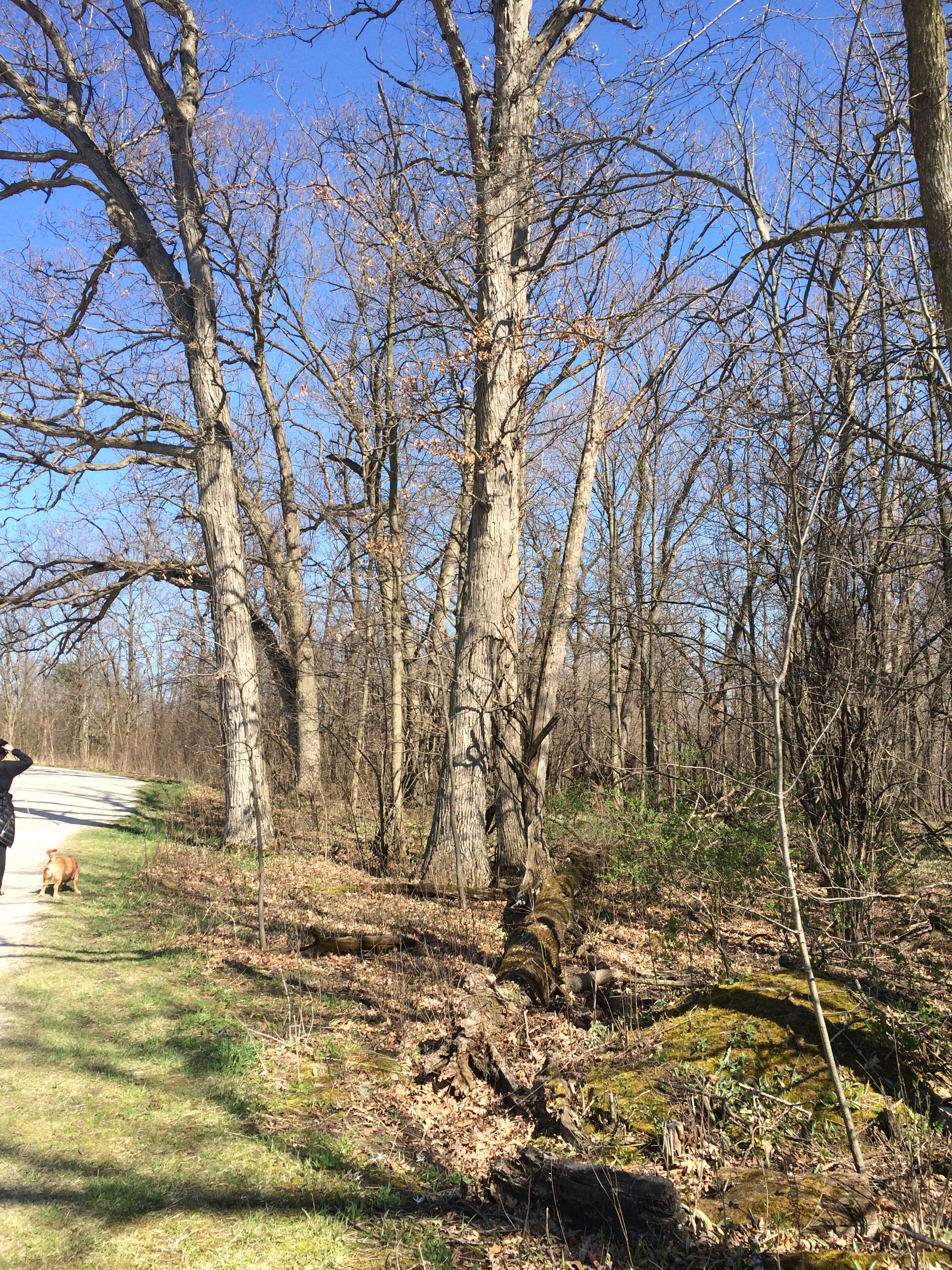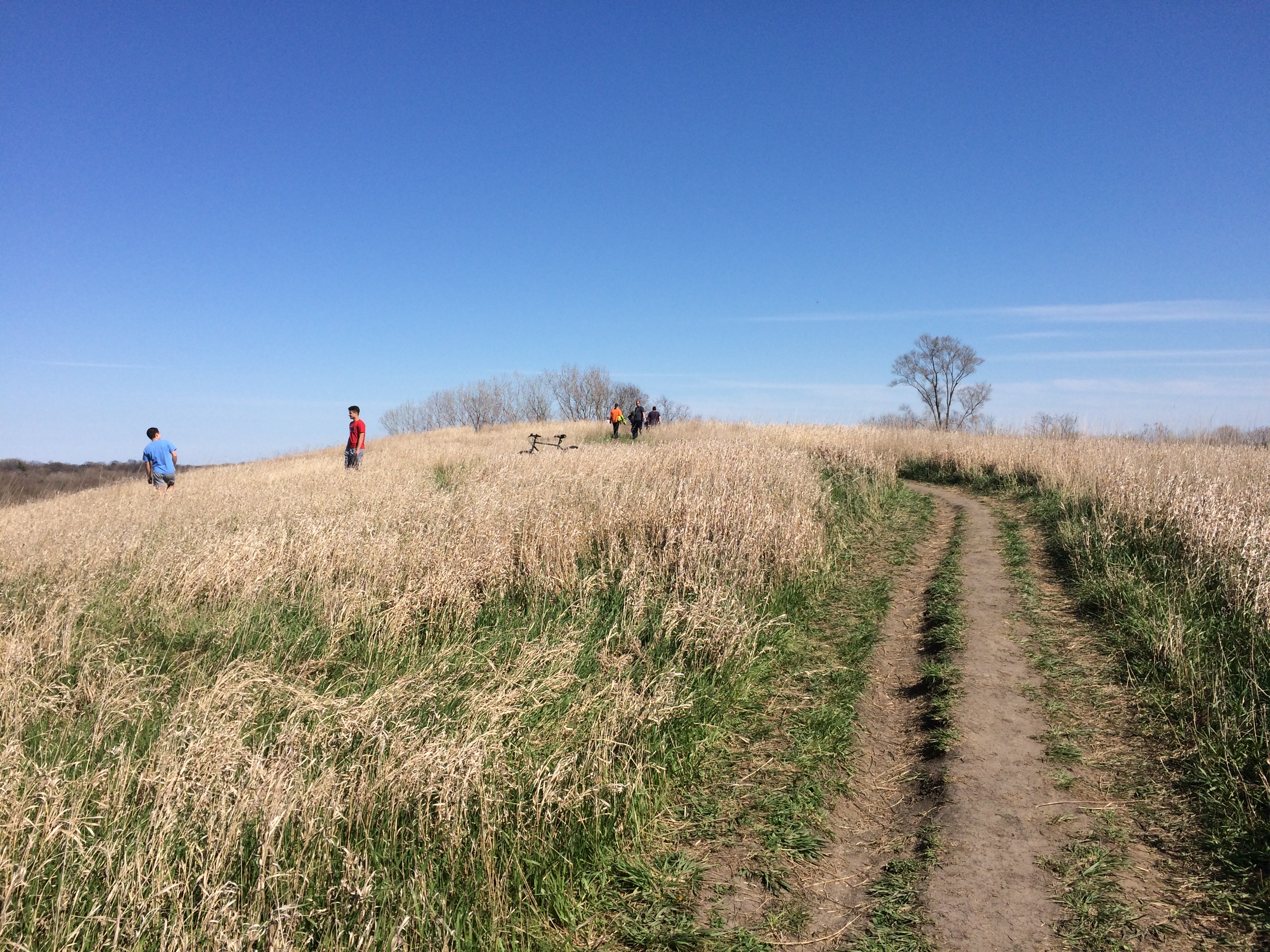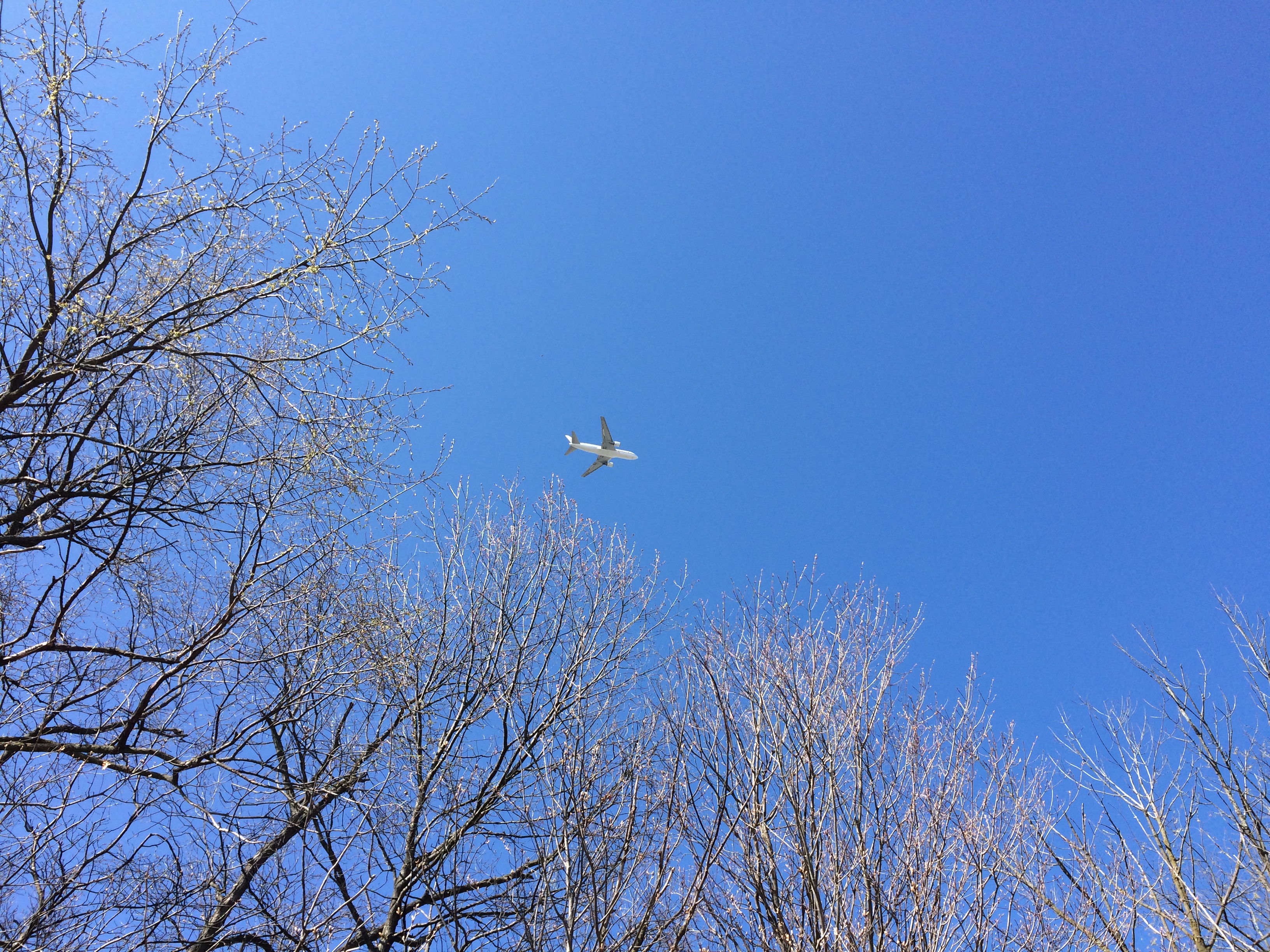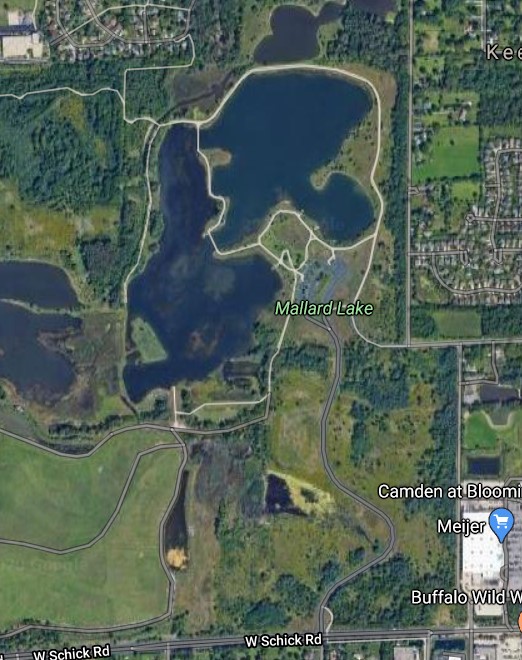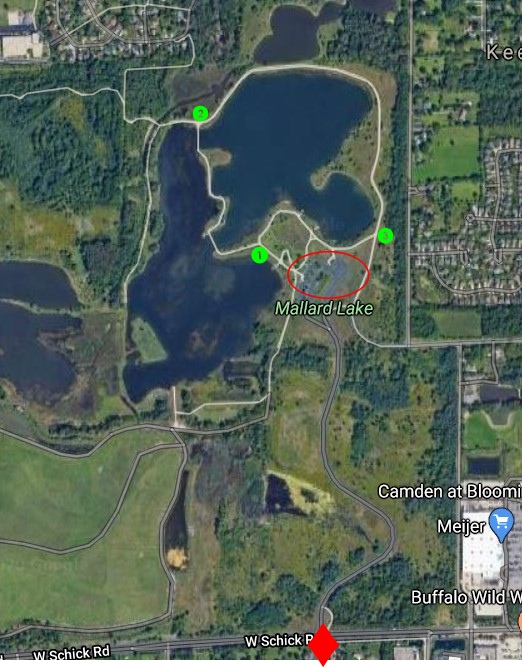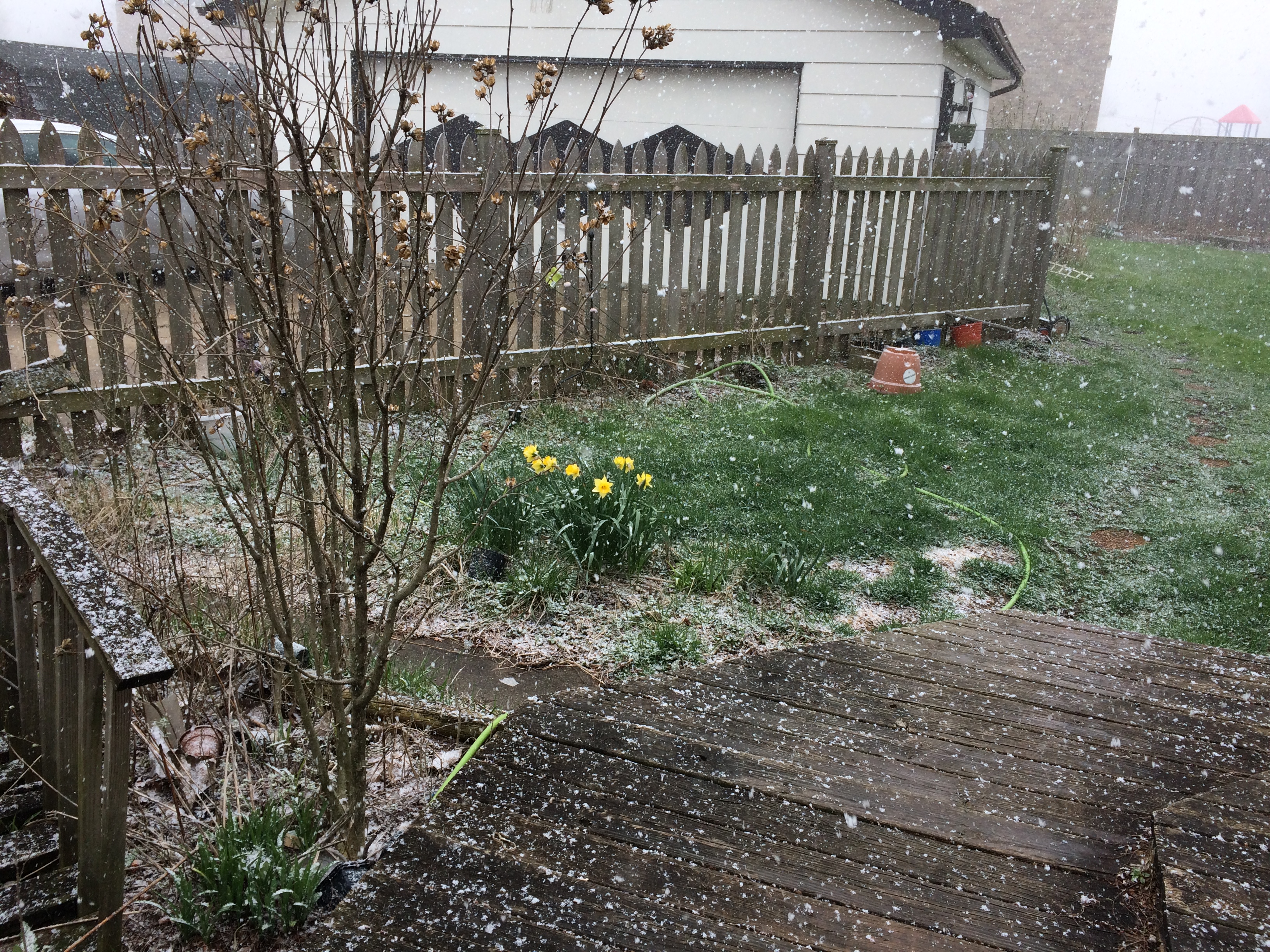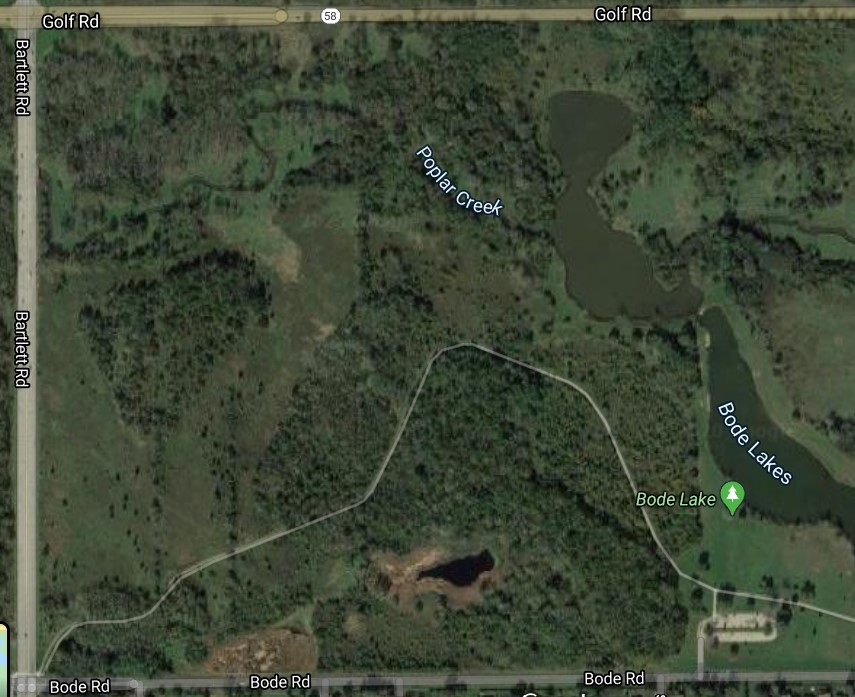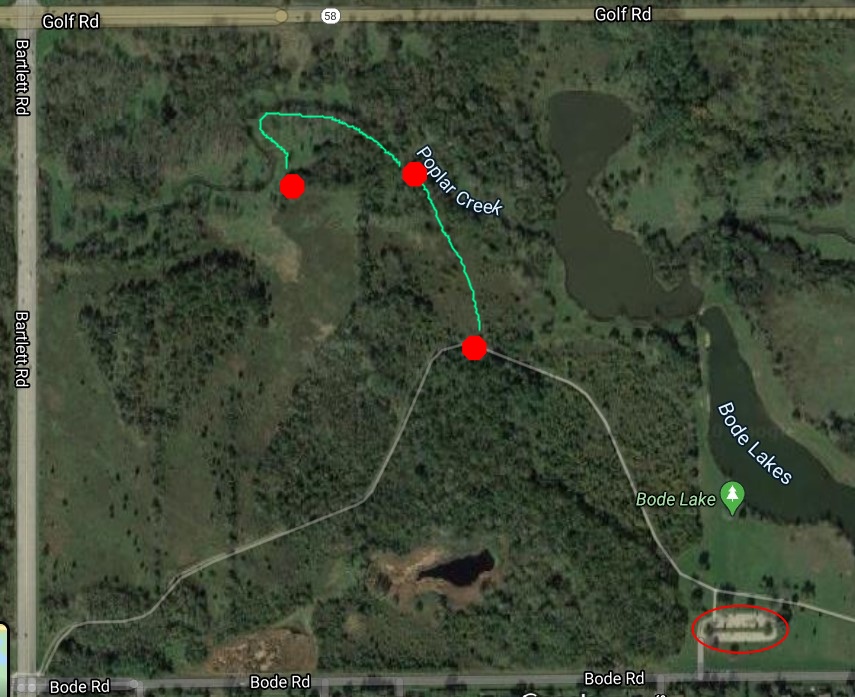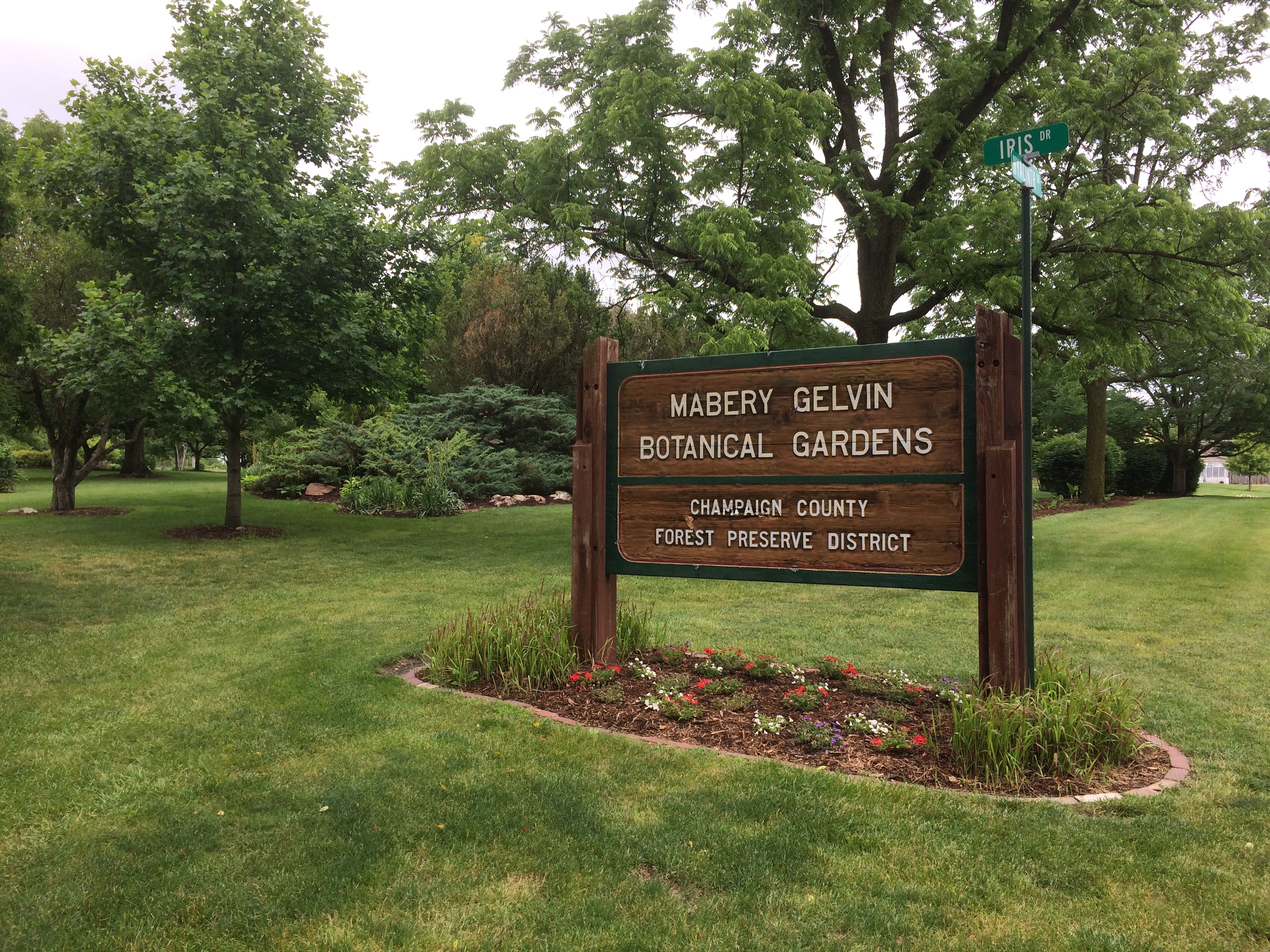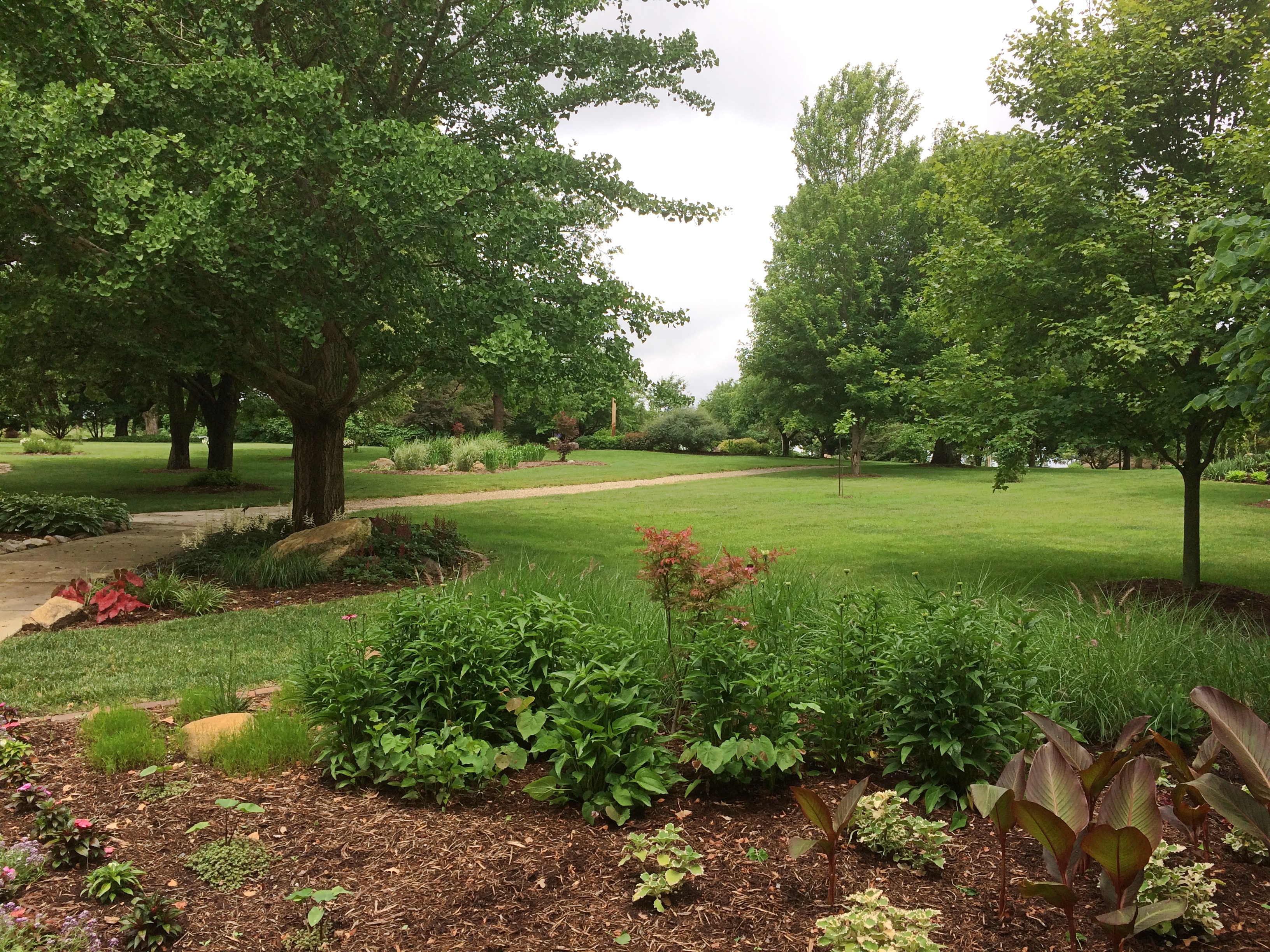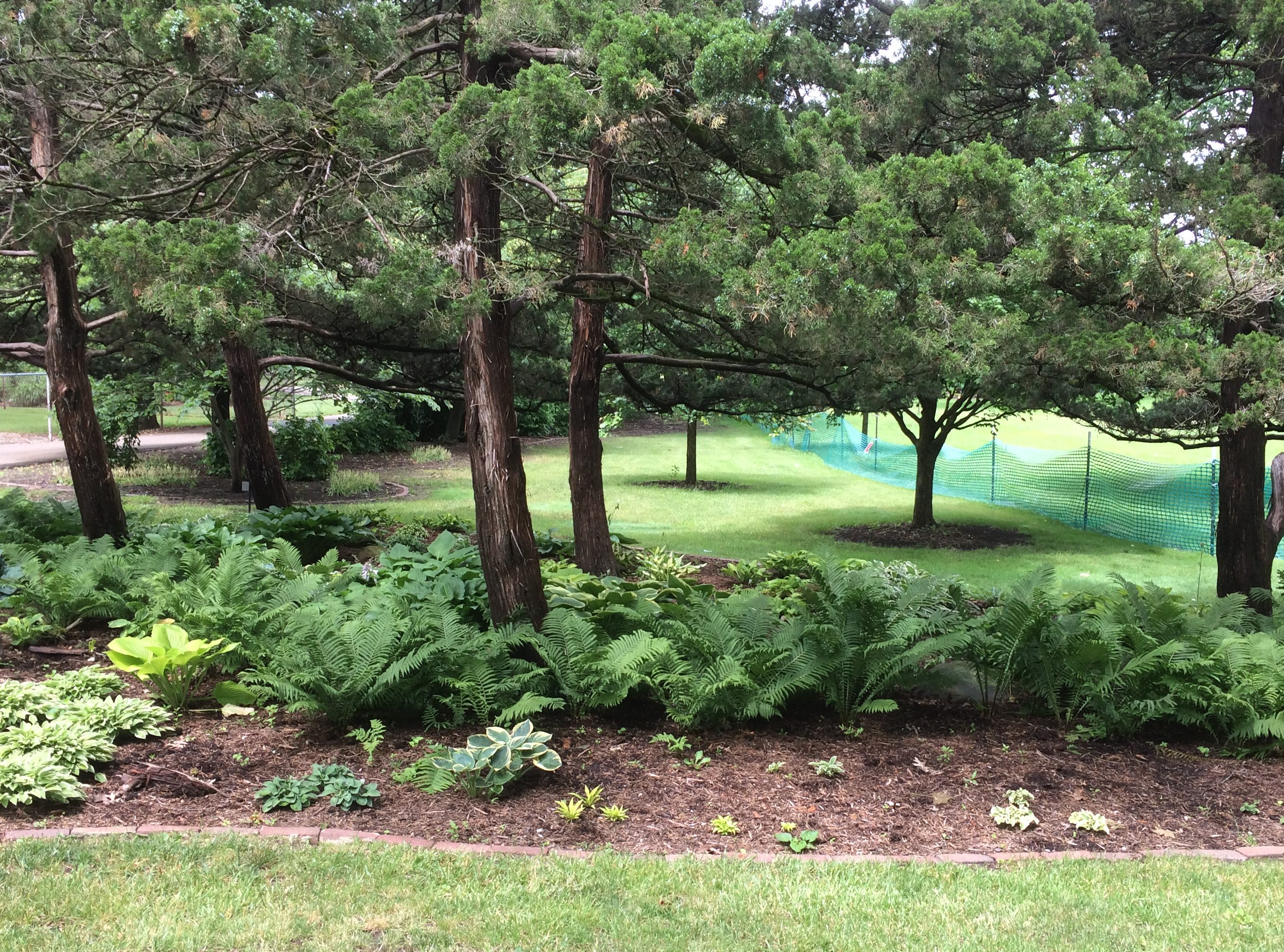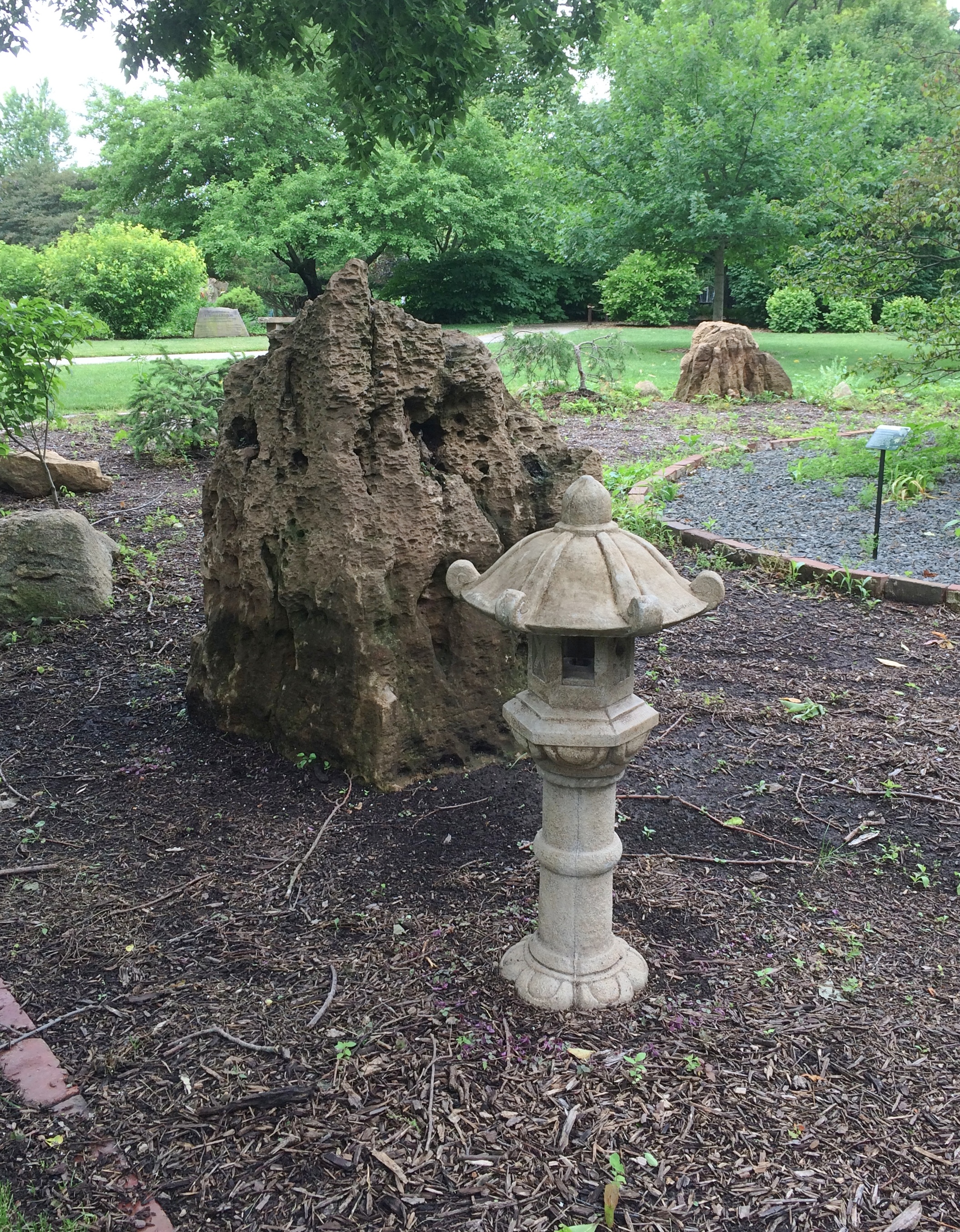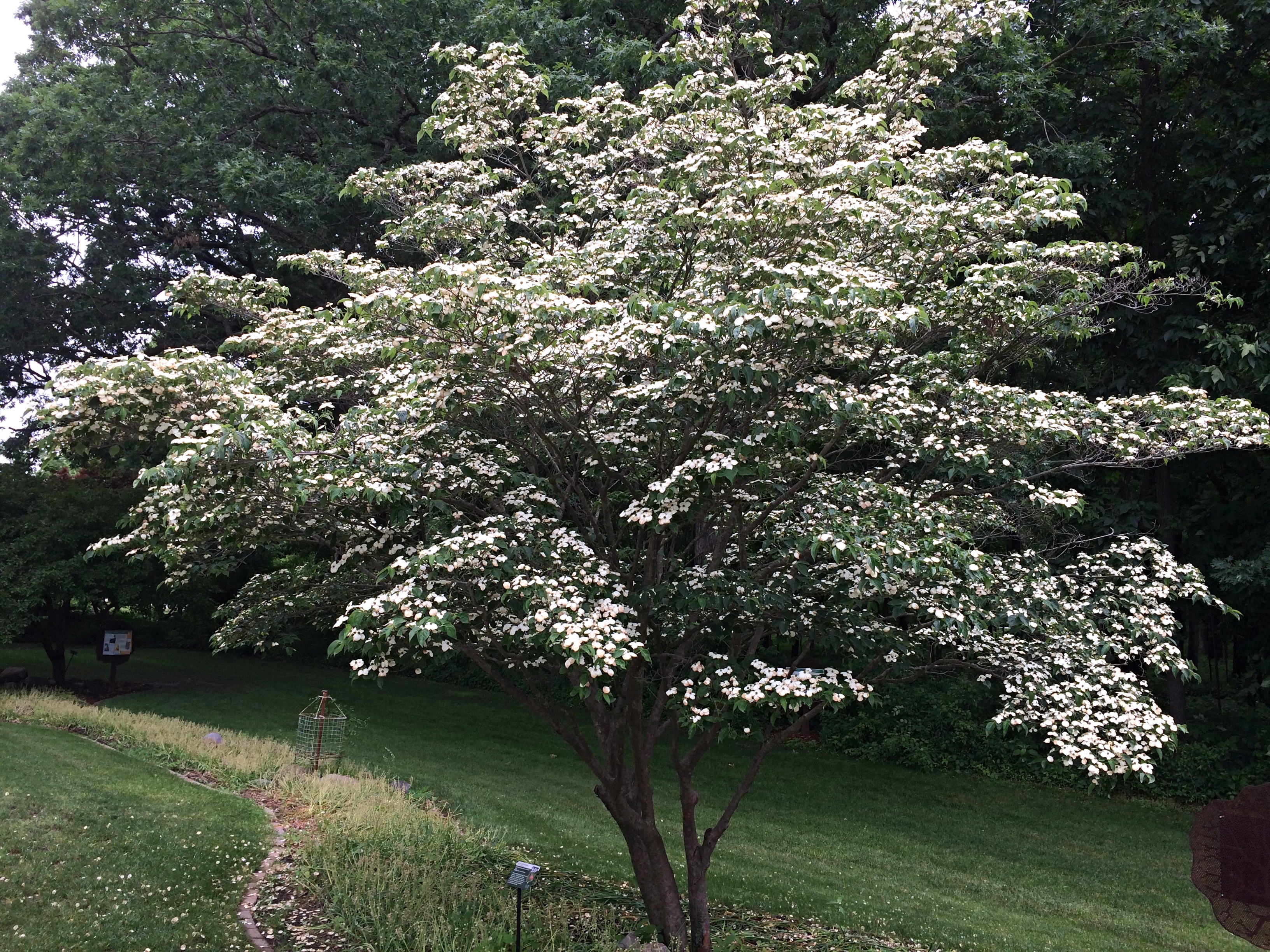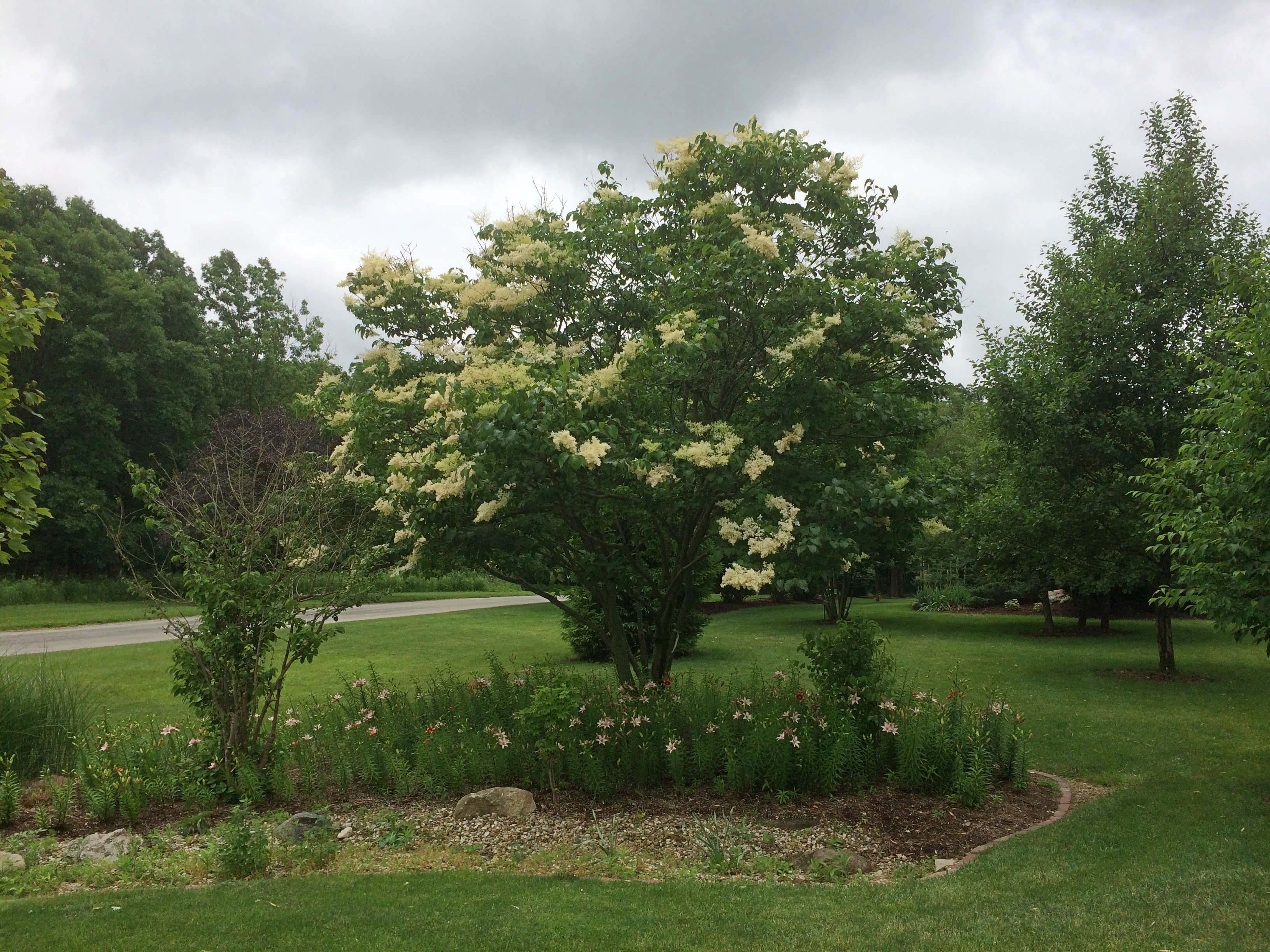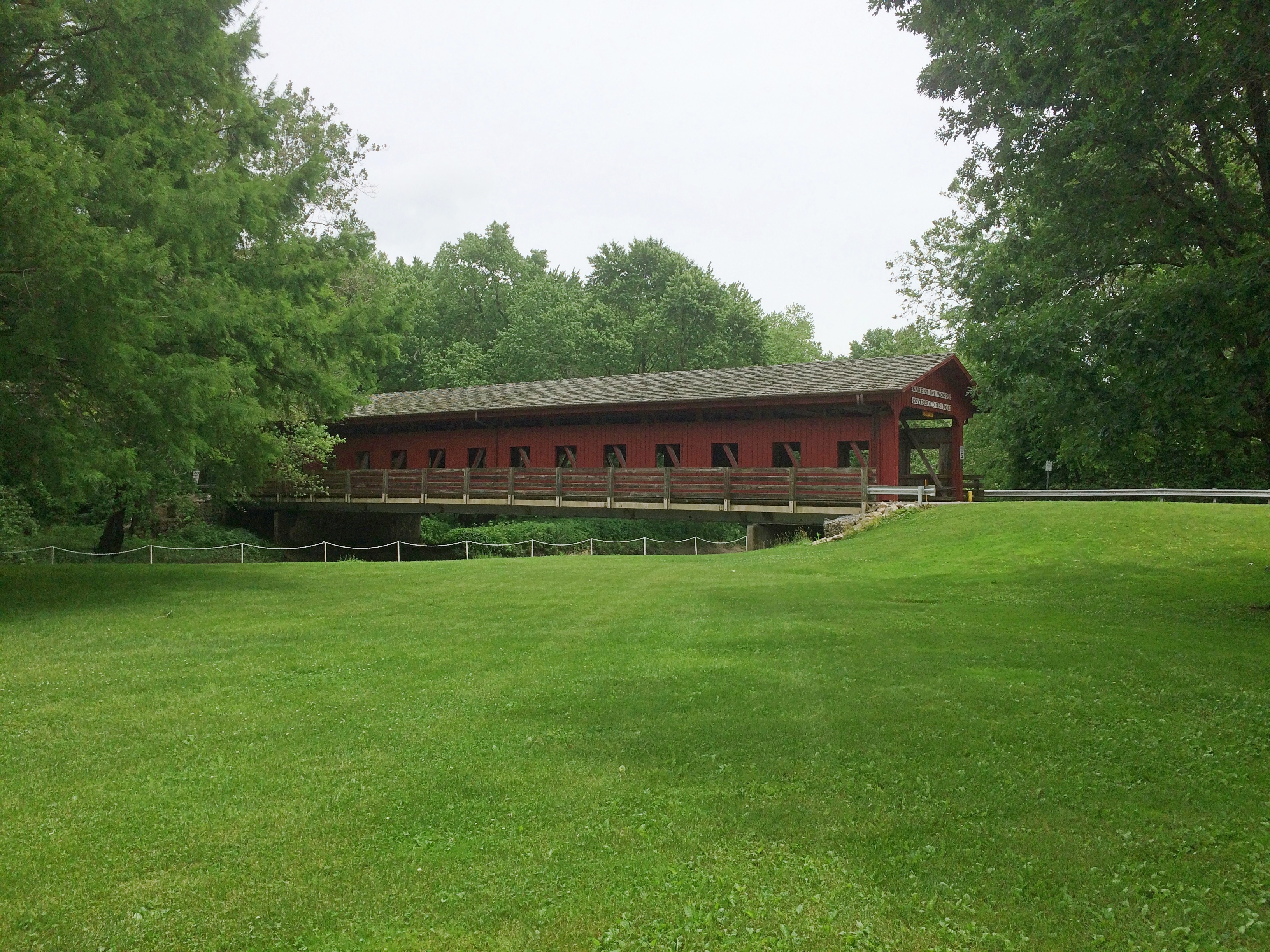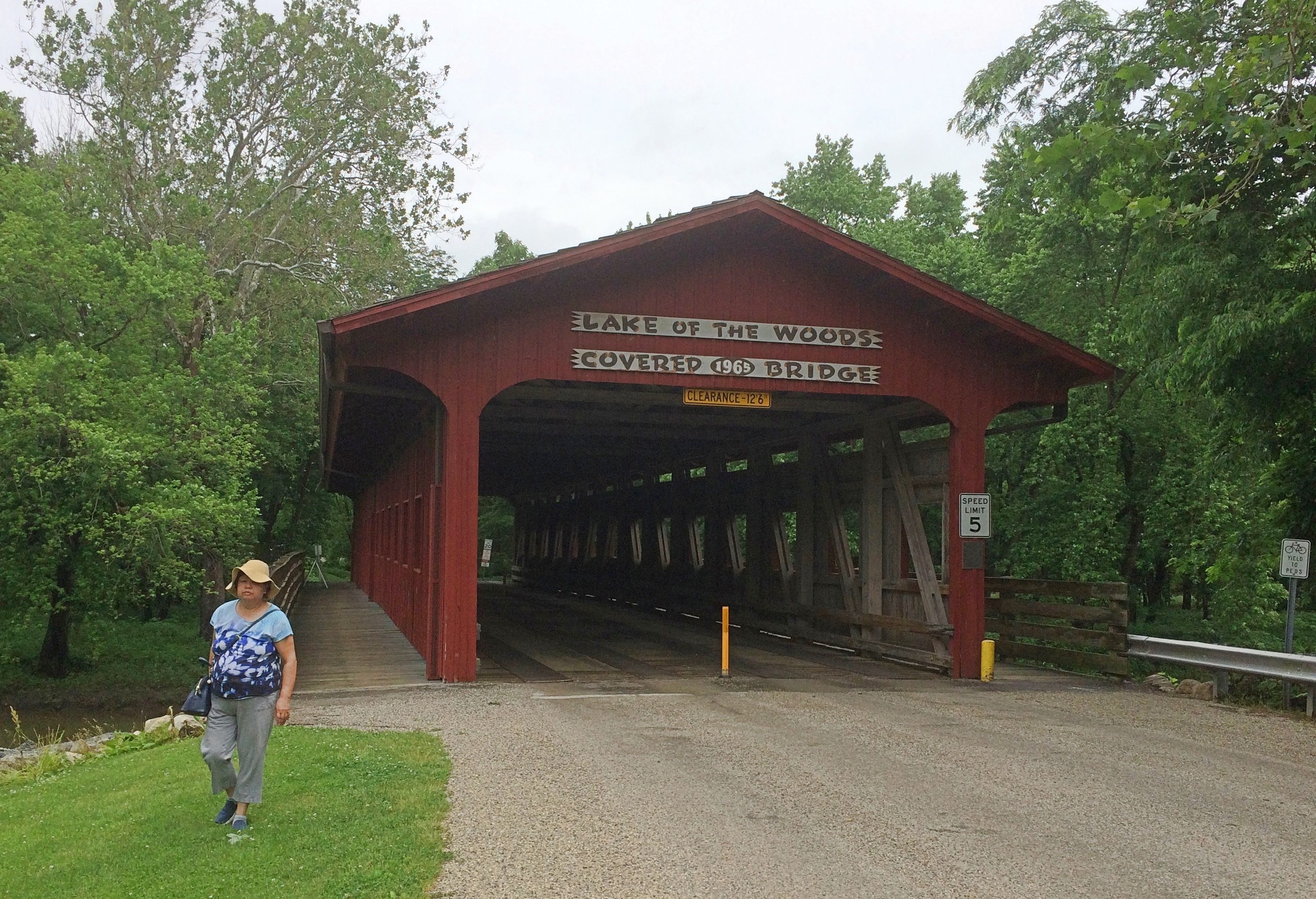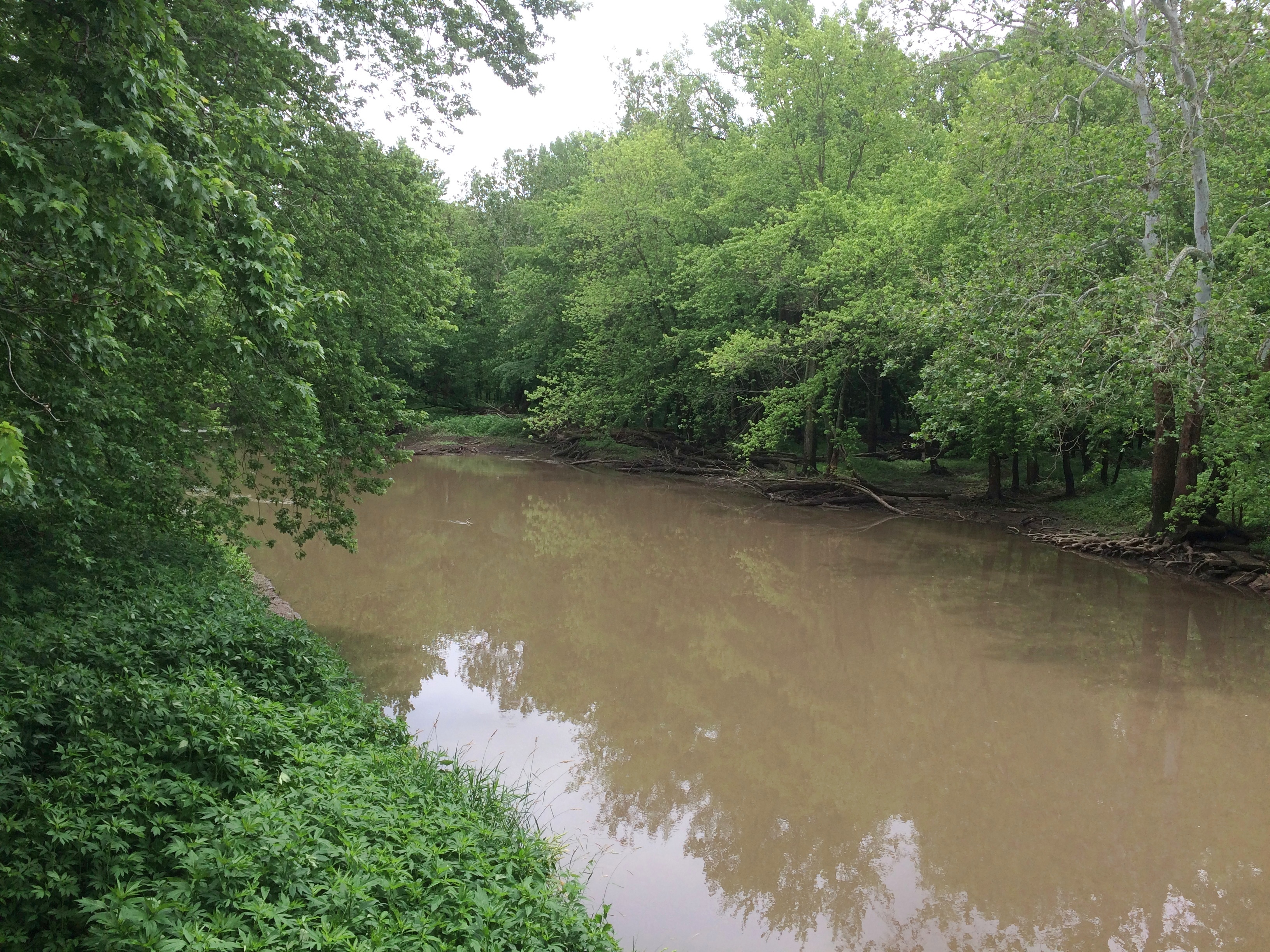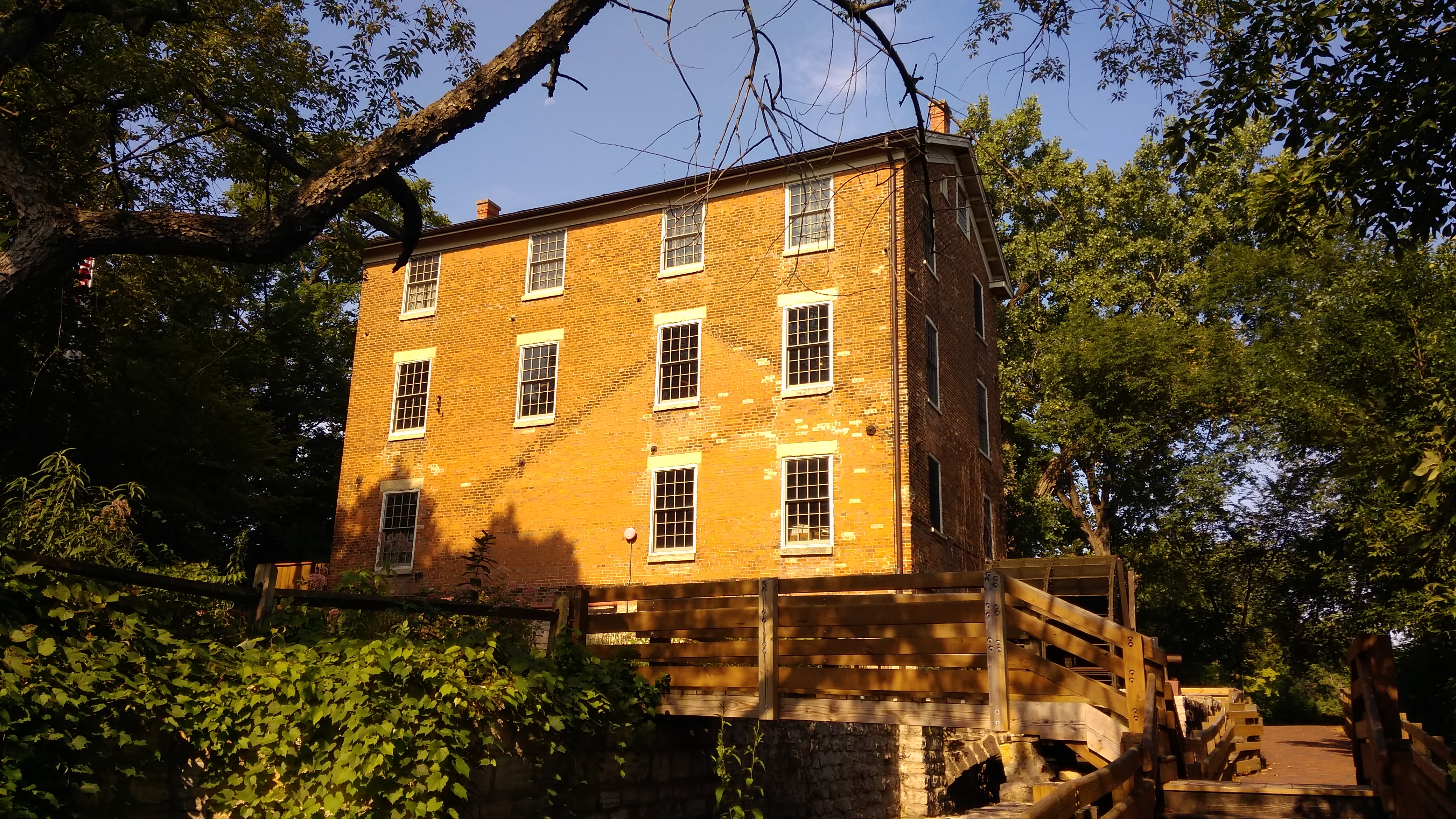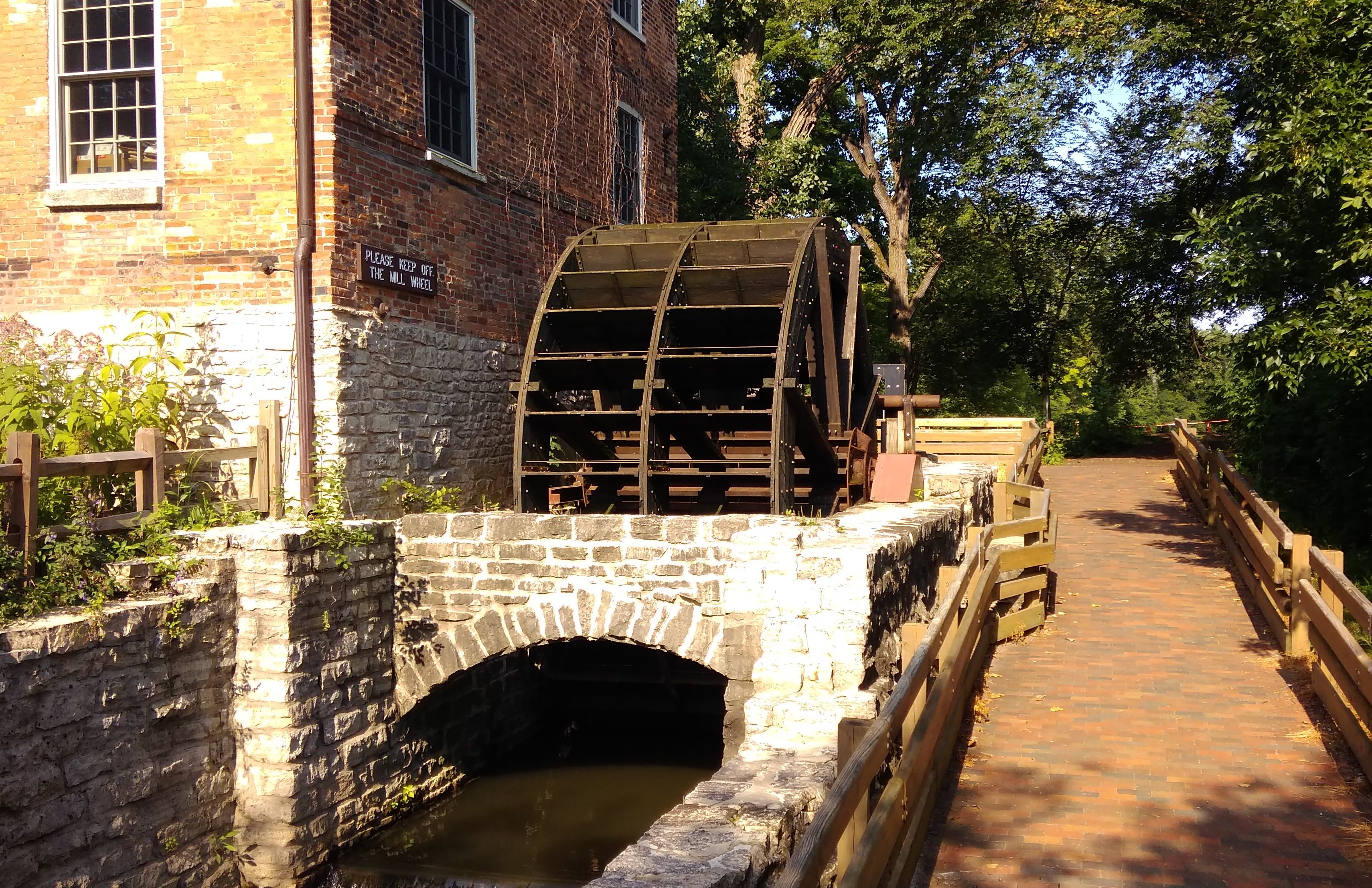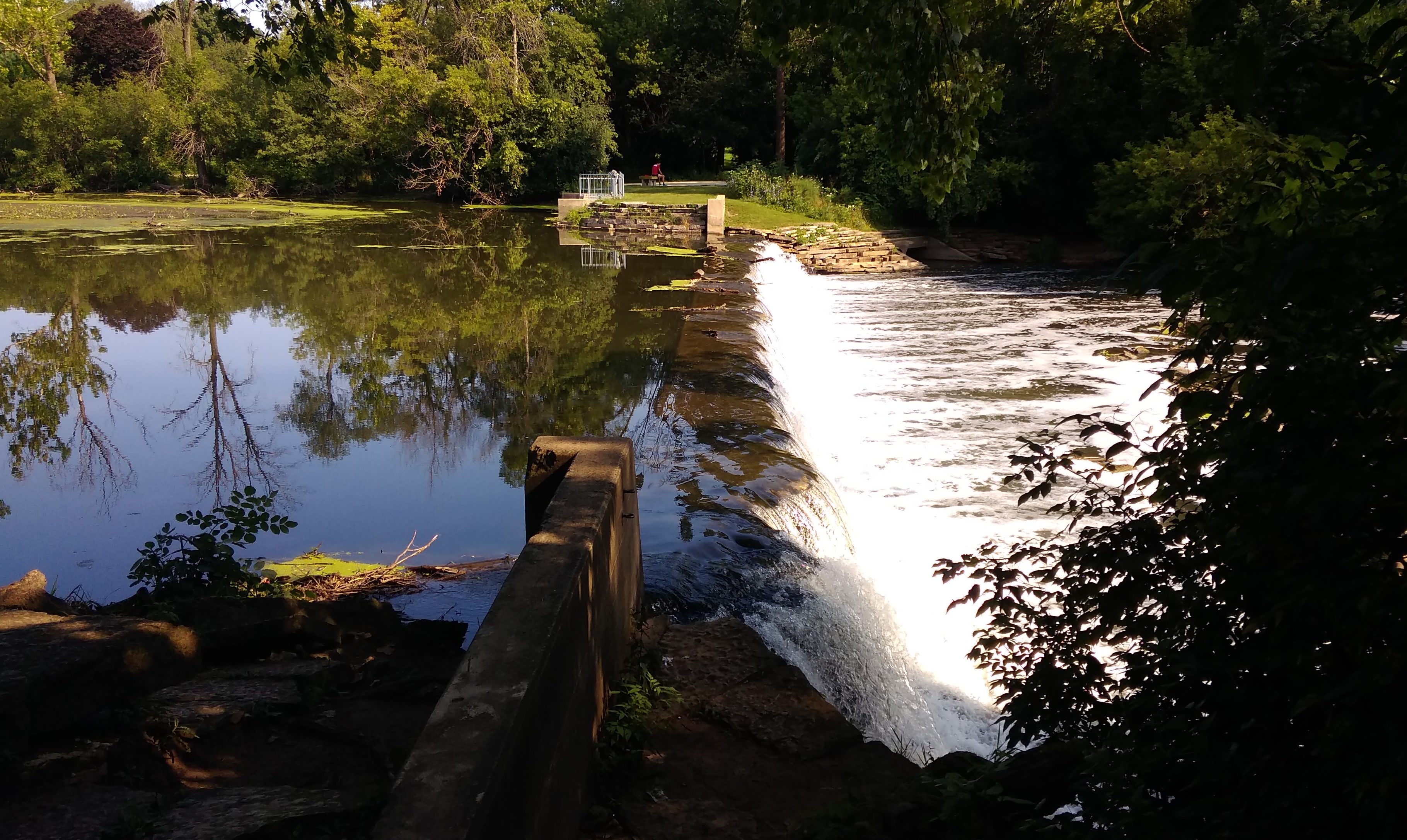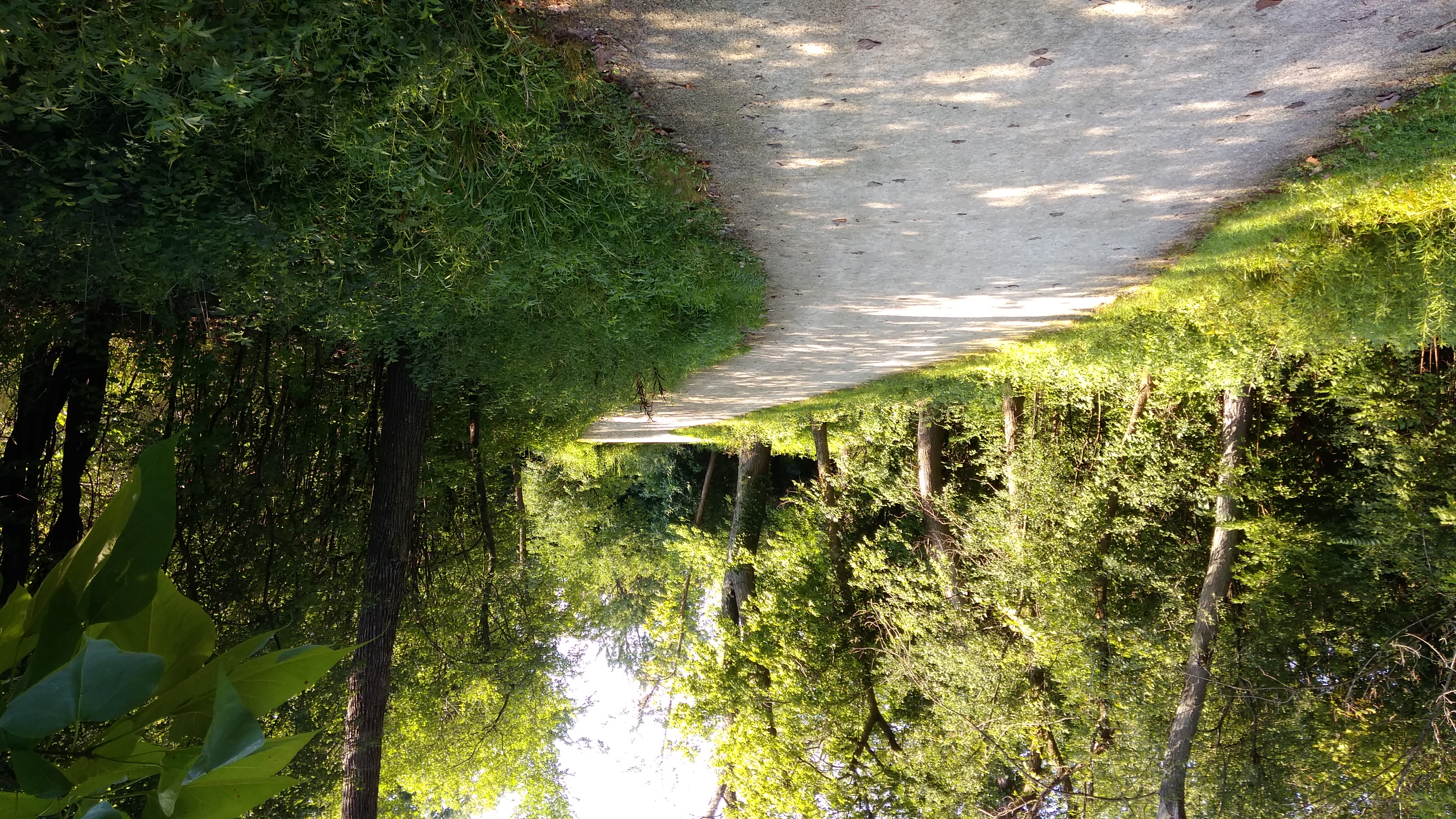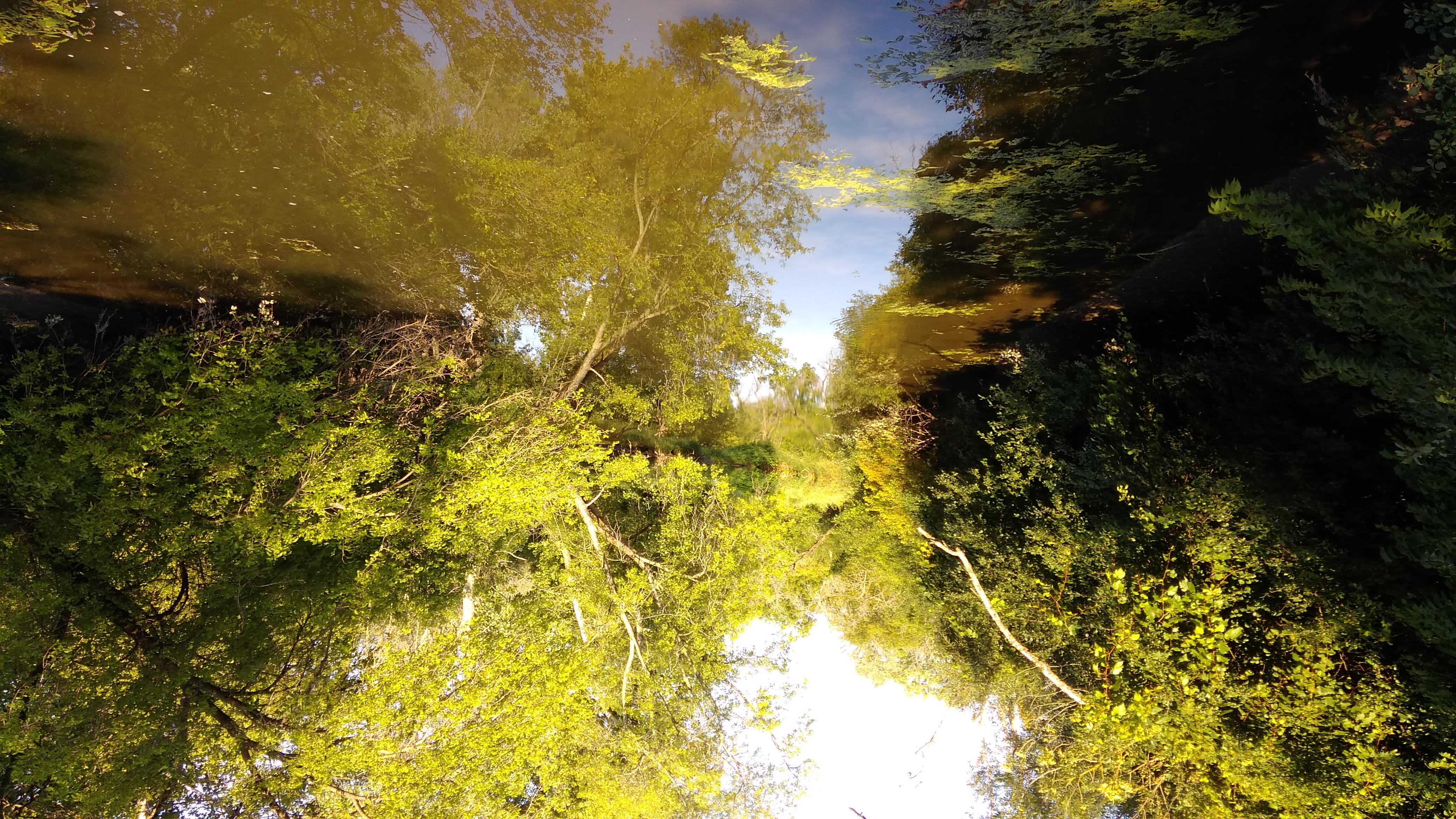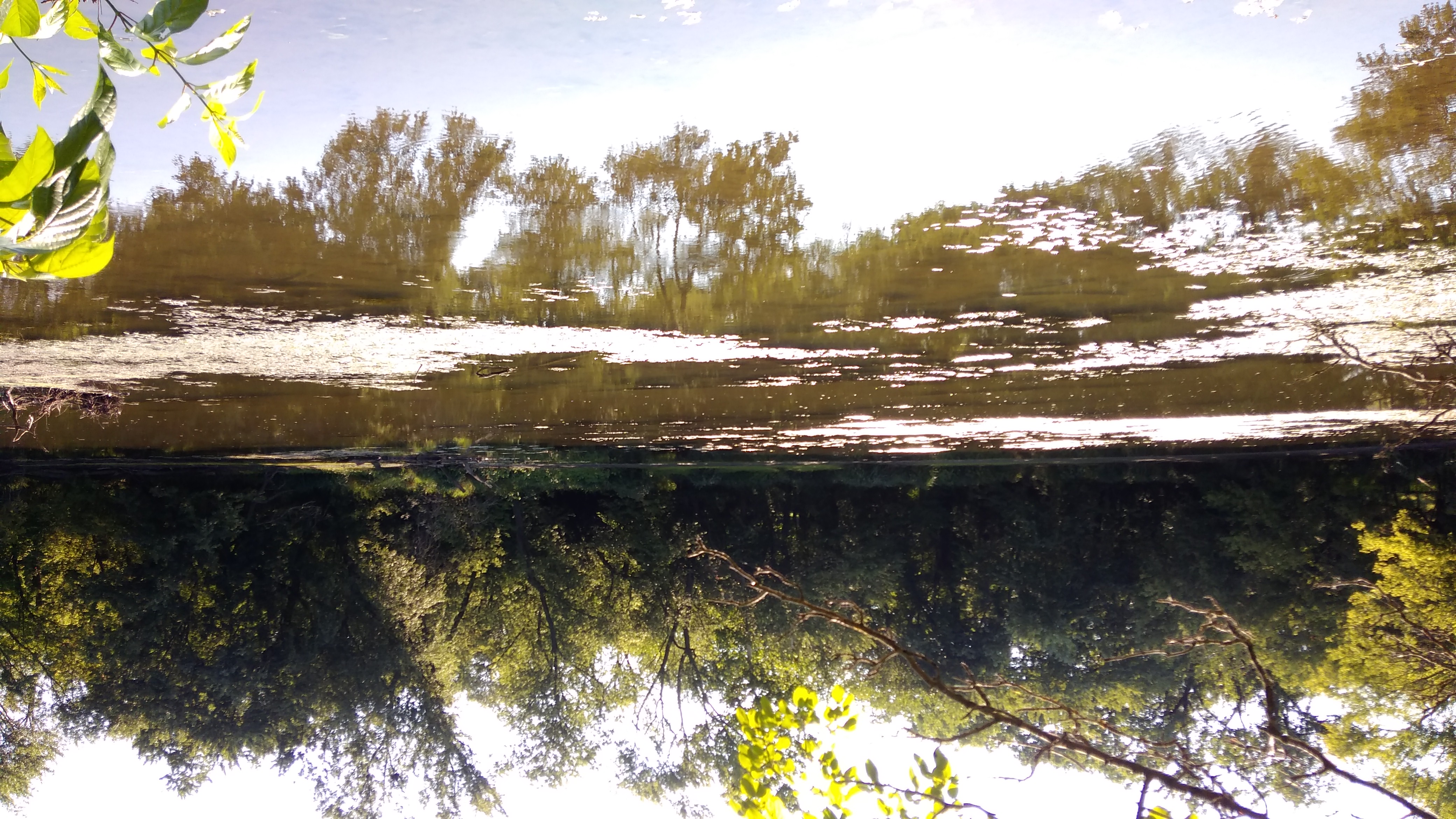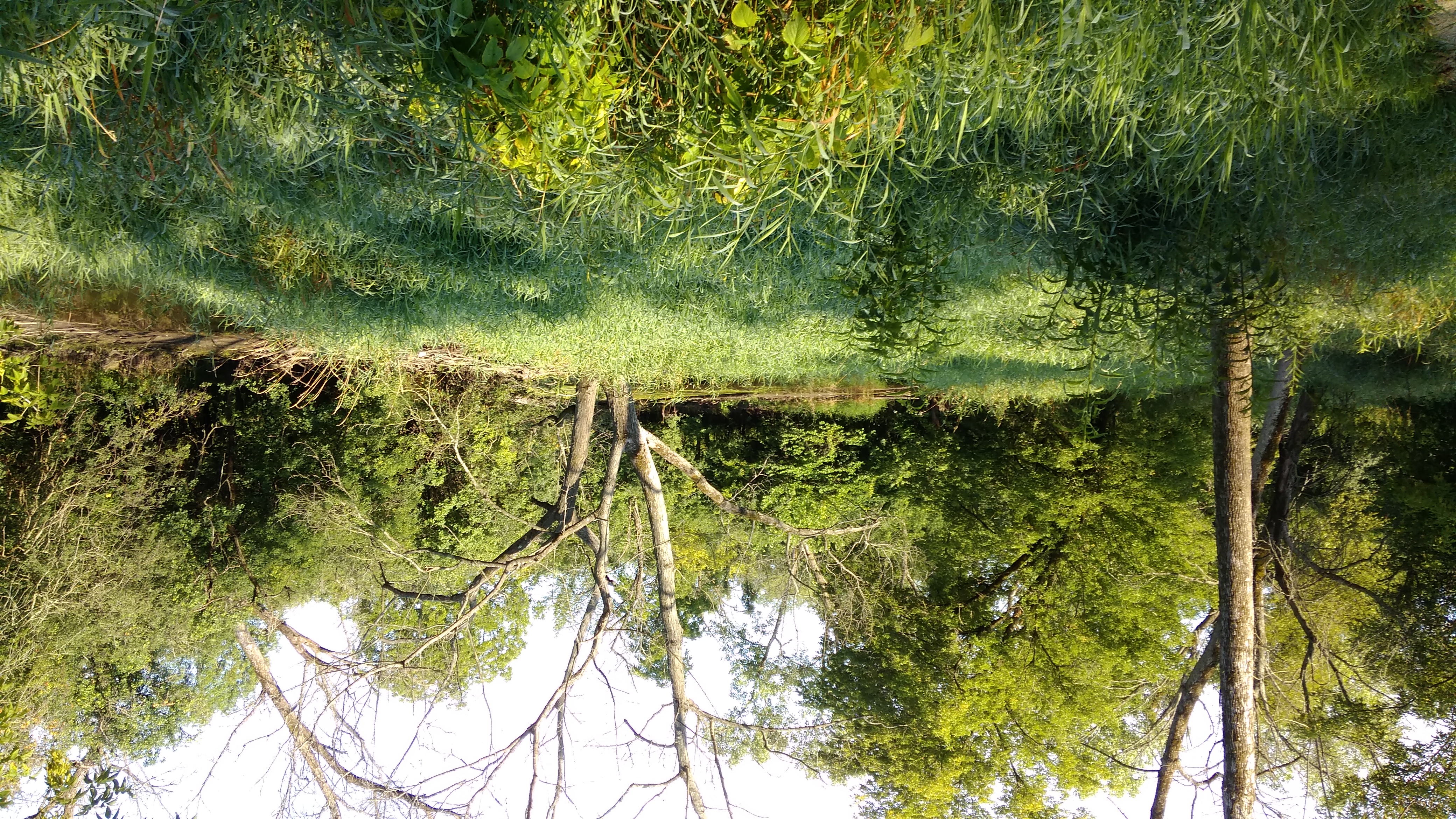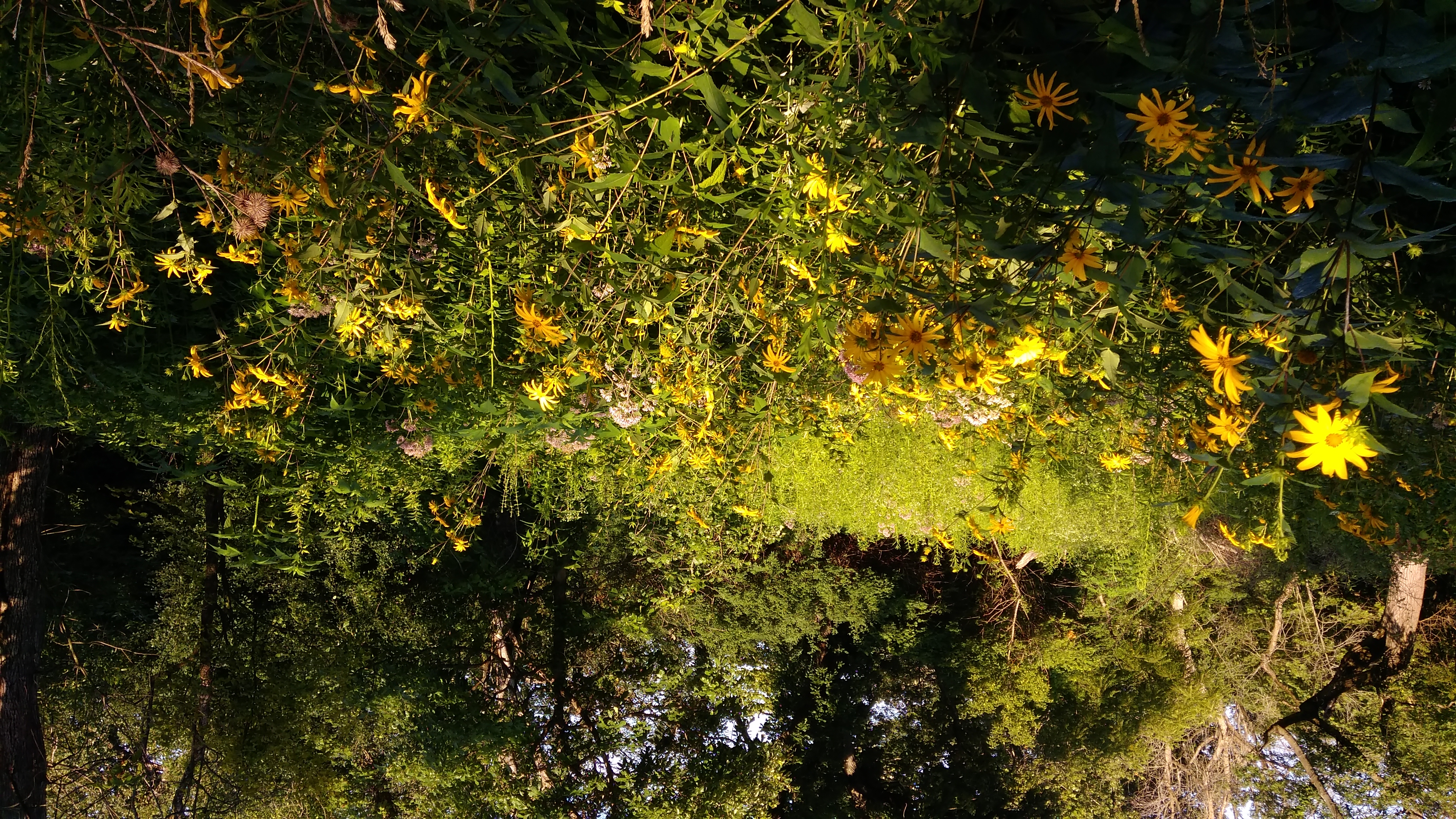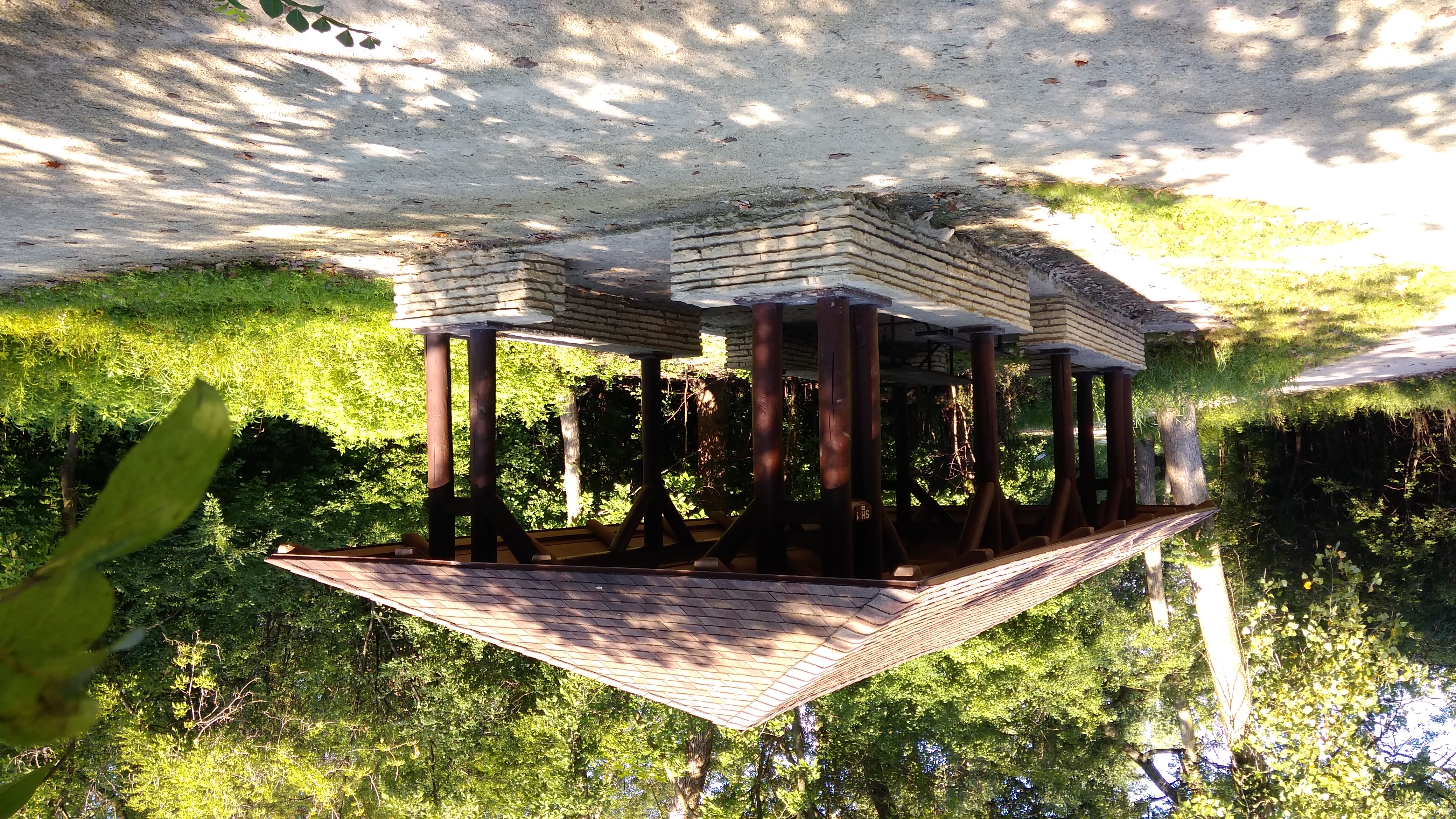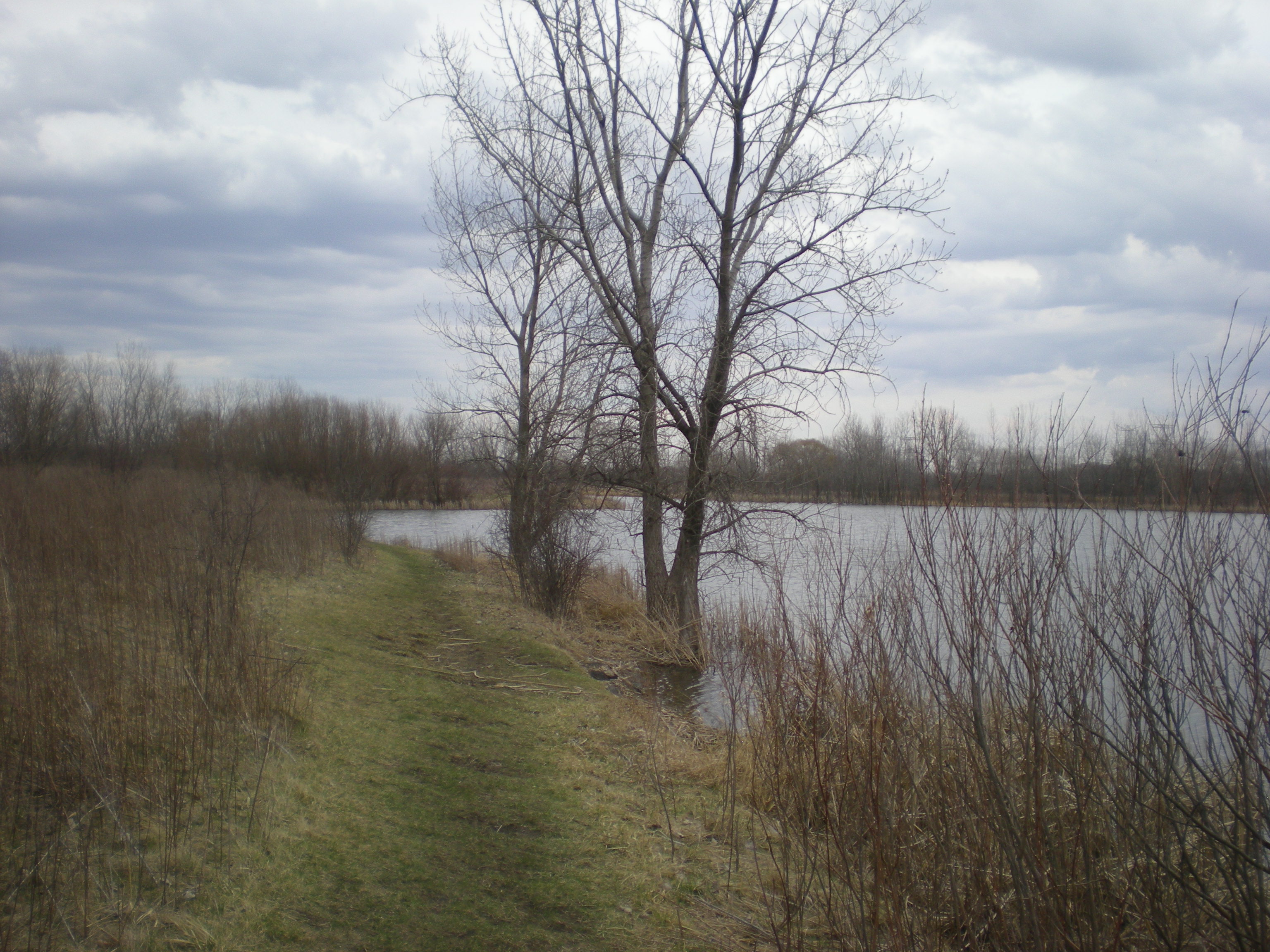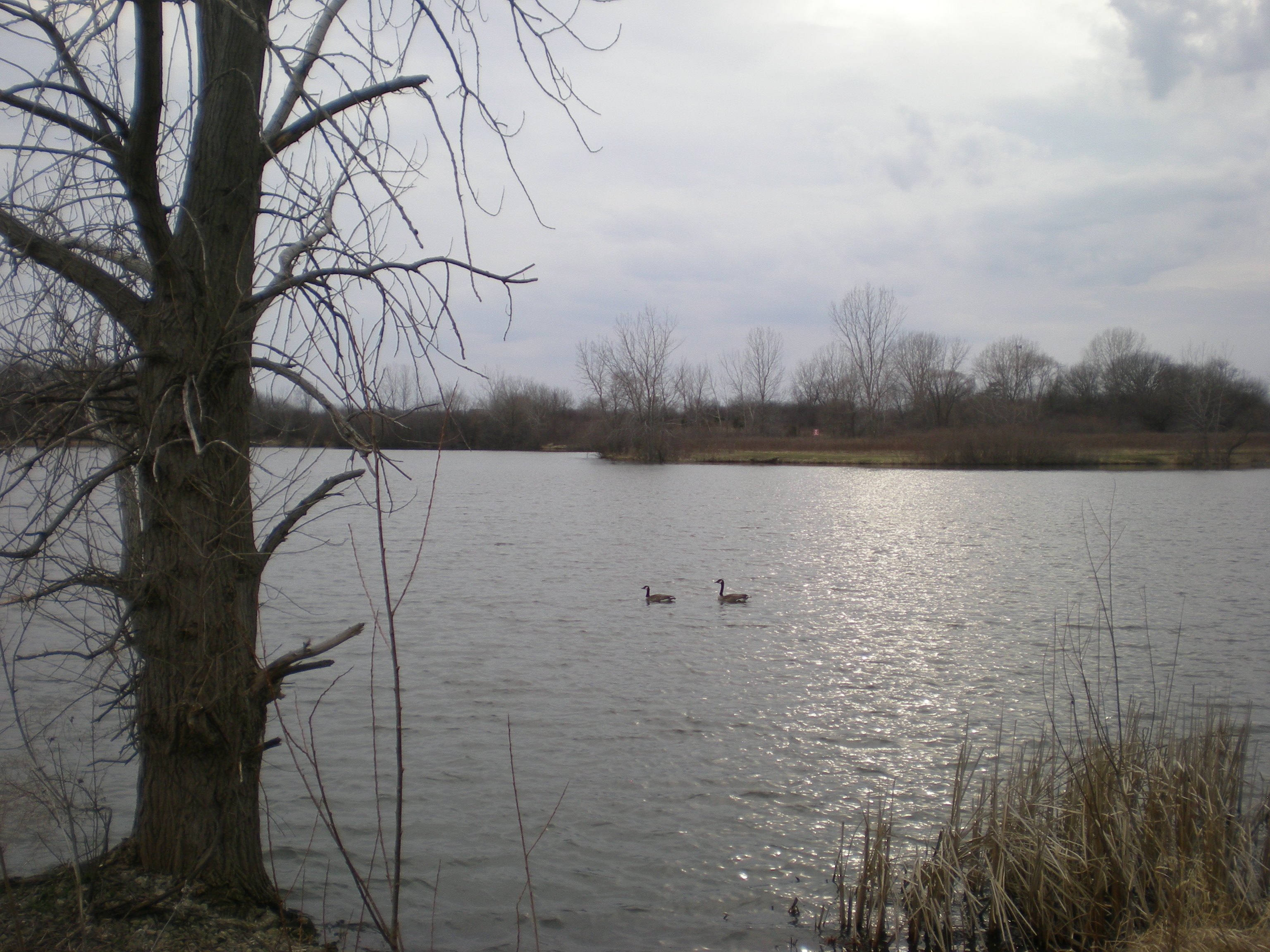Paul Douglas was a U.S. Senator from Illinois, in that office from 1949 to 1967. I’m fairly sure that the Paul Douglas Forest Preserve in northwest Cook County is named after him, not the radio man and movie actor in Panic in the Streets, a picture I hear is getting renewed attention these days.
On Sunday, as the heat of the day wore off, we went to the 1,800-acre Paul Douglas Forest Preserve. Forest is actually a misnomer in this case, and for some of the other forest preserves, since it includes not only conventional forestland, but also grasslands, wetland and (so I’ve read) a heron rookery.
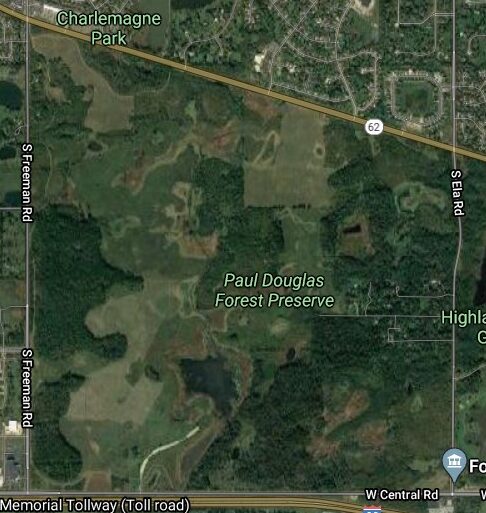 Pleasant and now lush green.
Pleasant and now lush green.
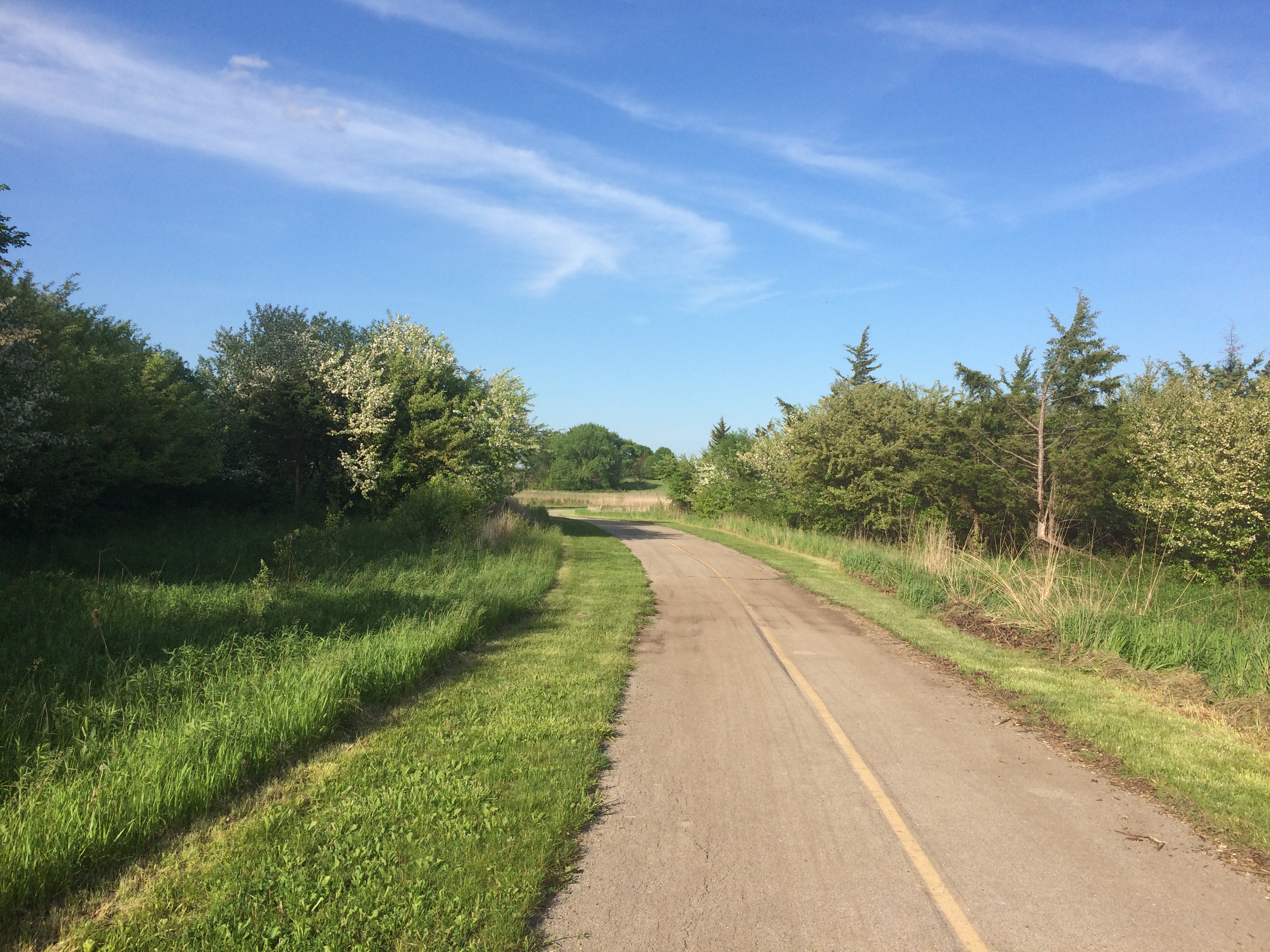 The seven-mile trail loops the edge of the more-or-less square preserve, which is fine except where it parallels the tollway (I-90).
The seven-mile trail loops the edge of the more-or-less square preserve, which is fine except where it parallels the tollway (I-90).
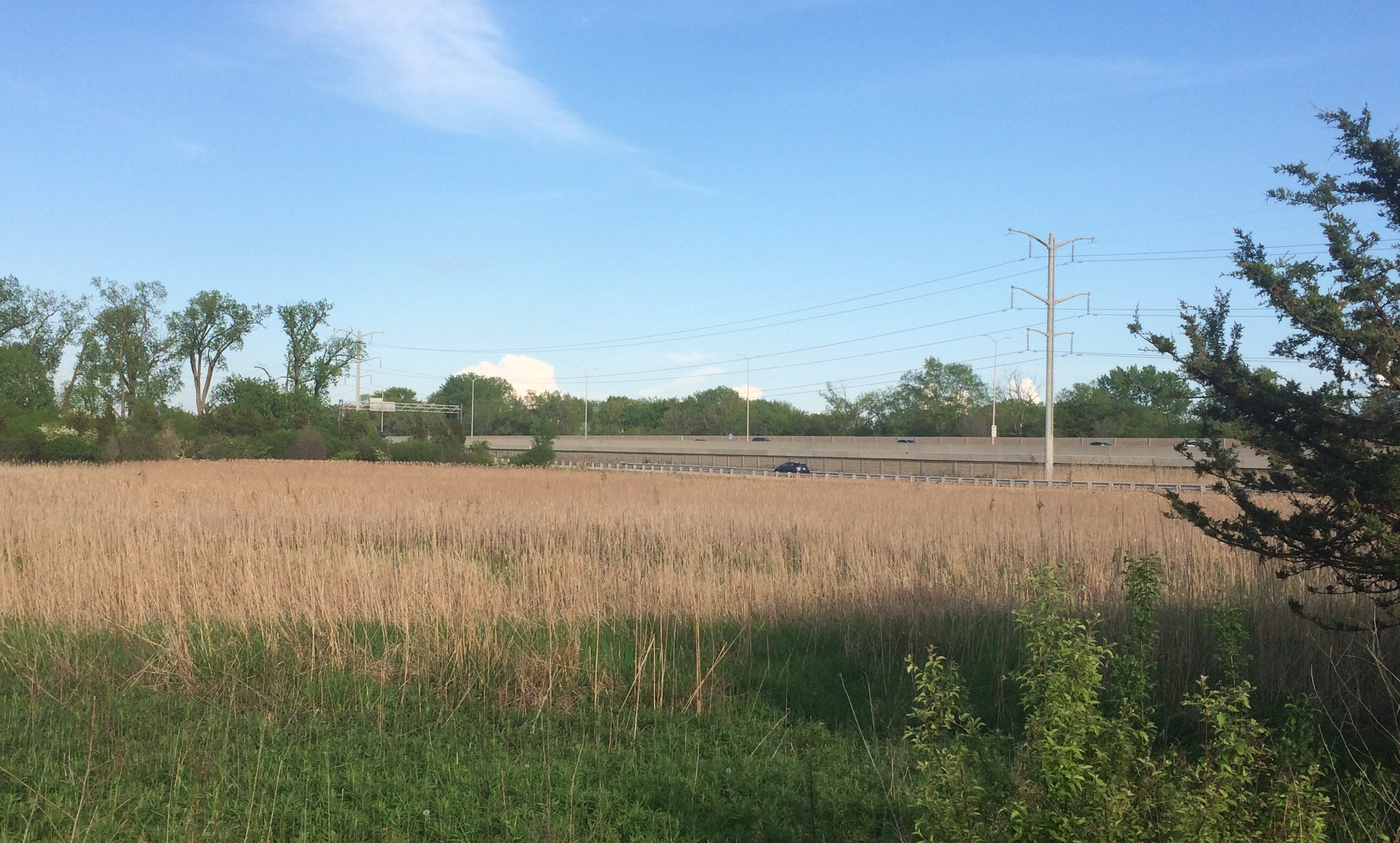 We walked from the parking lot westward near I-90 and then followed the trail as it bent northward, along the much quieter S. Freeman Road. We followed that for a bit and then doubled back, covering about a mile and a half all together.
We walked from the parking lot westward near I-90 and then followed the trail as it bent northward, along the much quieter S. Freeman Road. We followed that for a bit and then doubled back, covering about a mile and a half all together.
Much more pleasant away from I-90; less noise and lots of visible grassland.
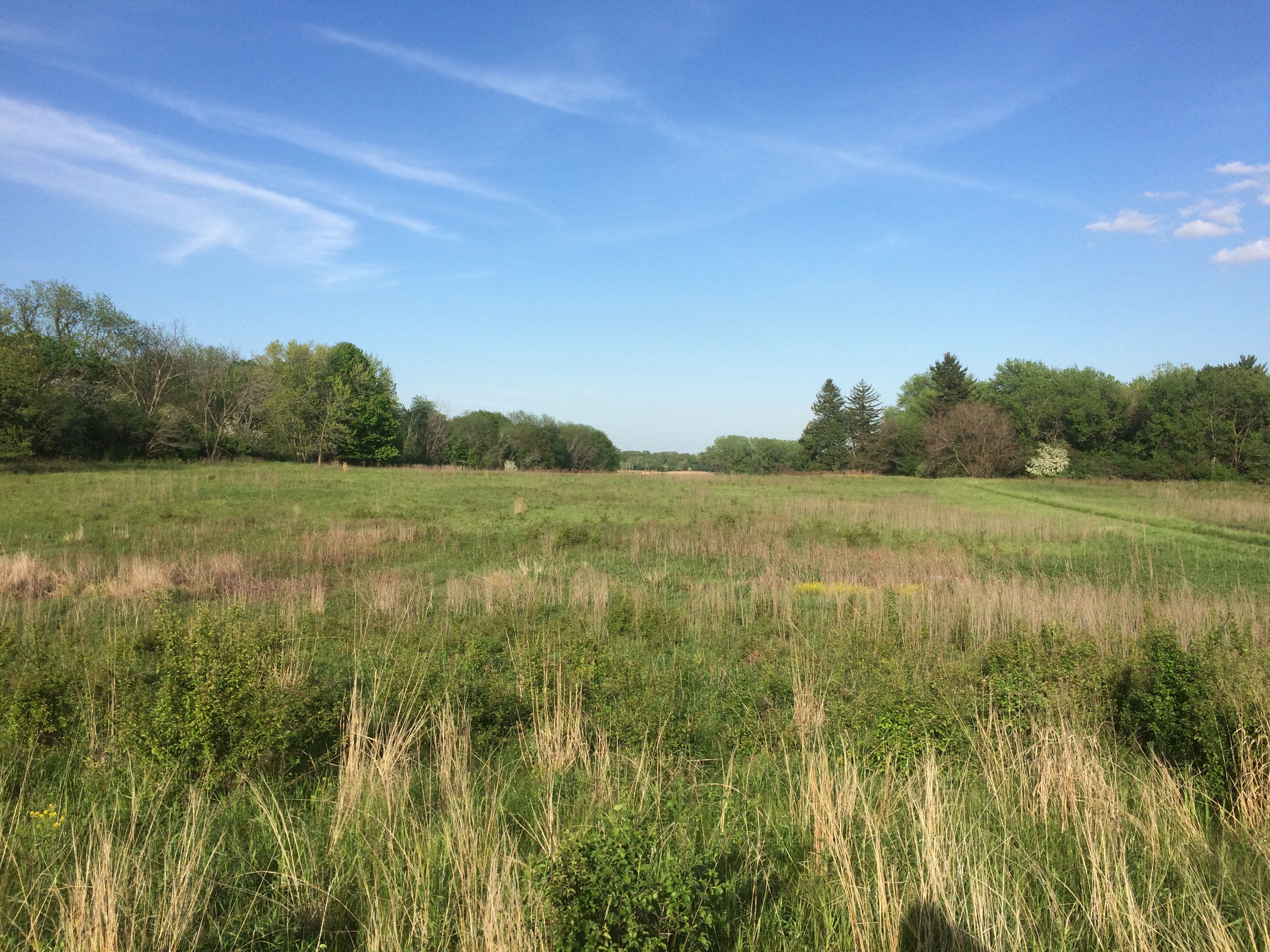 Along with wetland flowers.
Along with wetland flowers.
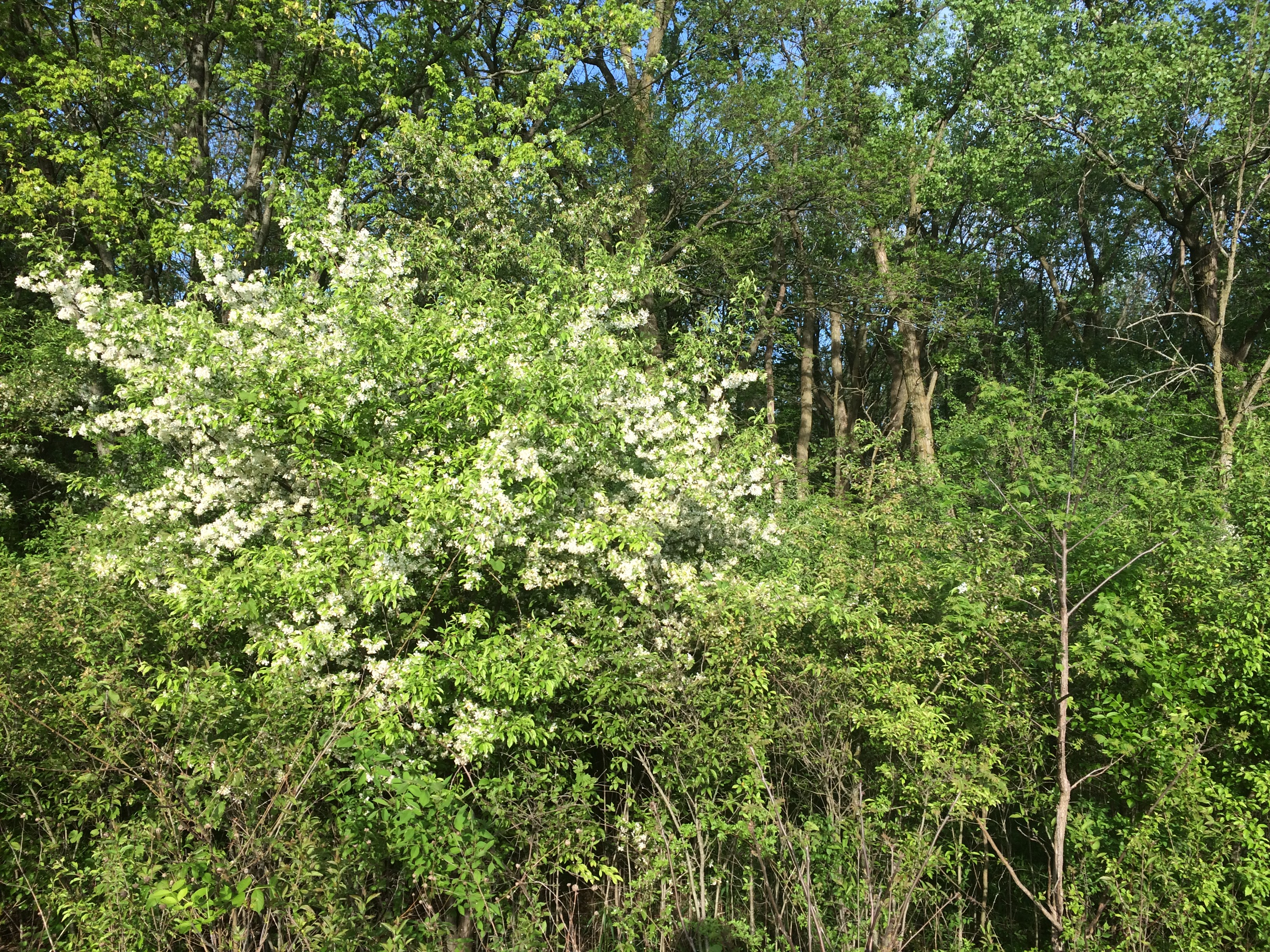
 Even late in the afternoon, it was still a little hot. The day was the first summer-like one of the year.
Even late in the afternoon, it was still a little hot. The day was the first summer-like one of the year.
 Soon after I took that picture, the dog found a muddy puddle. She not only drank from it — in preference to the clean but probably bland water we brought — but also cooled herself off by plopping down in the mud.
Soon after I took that picture, the dog found a muddy puddle. She not only drank from it — in preference to the clean but probably bland water we brought — but also cooled herself off by plopping down in the mud.
